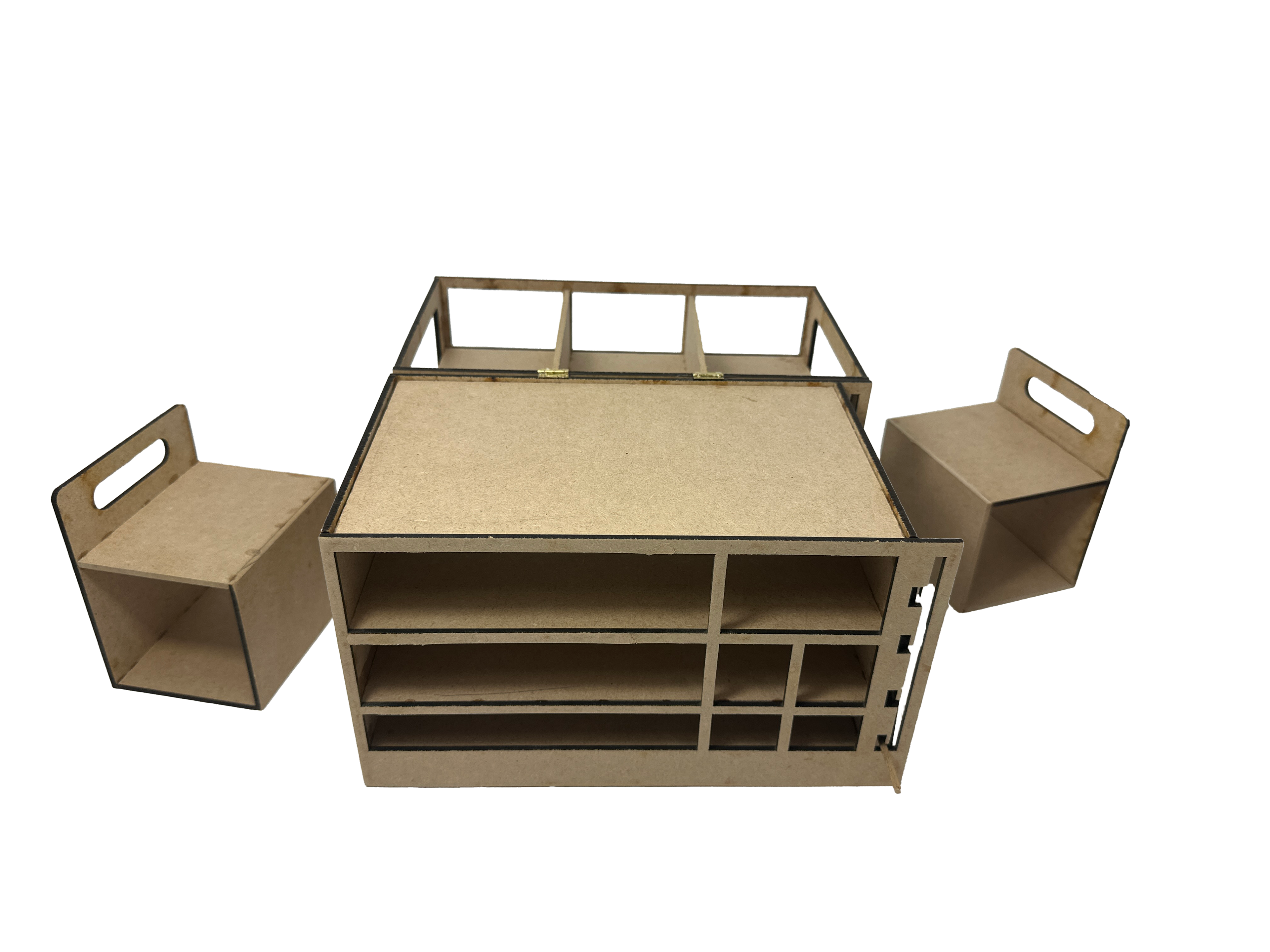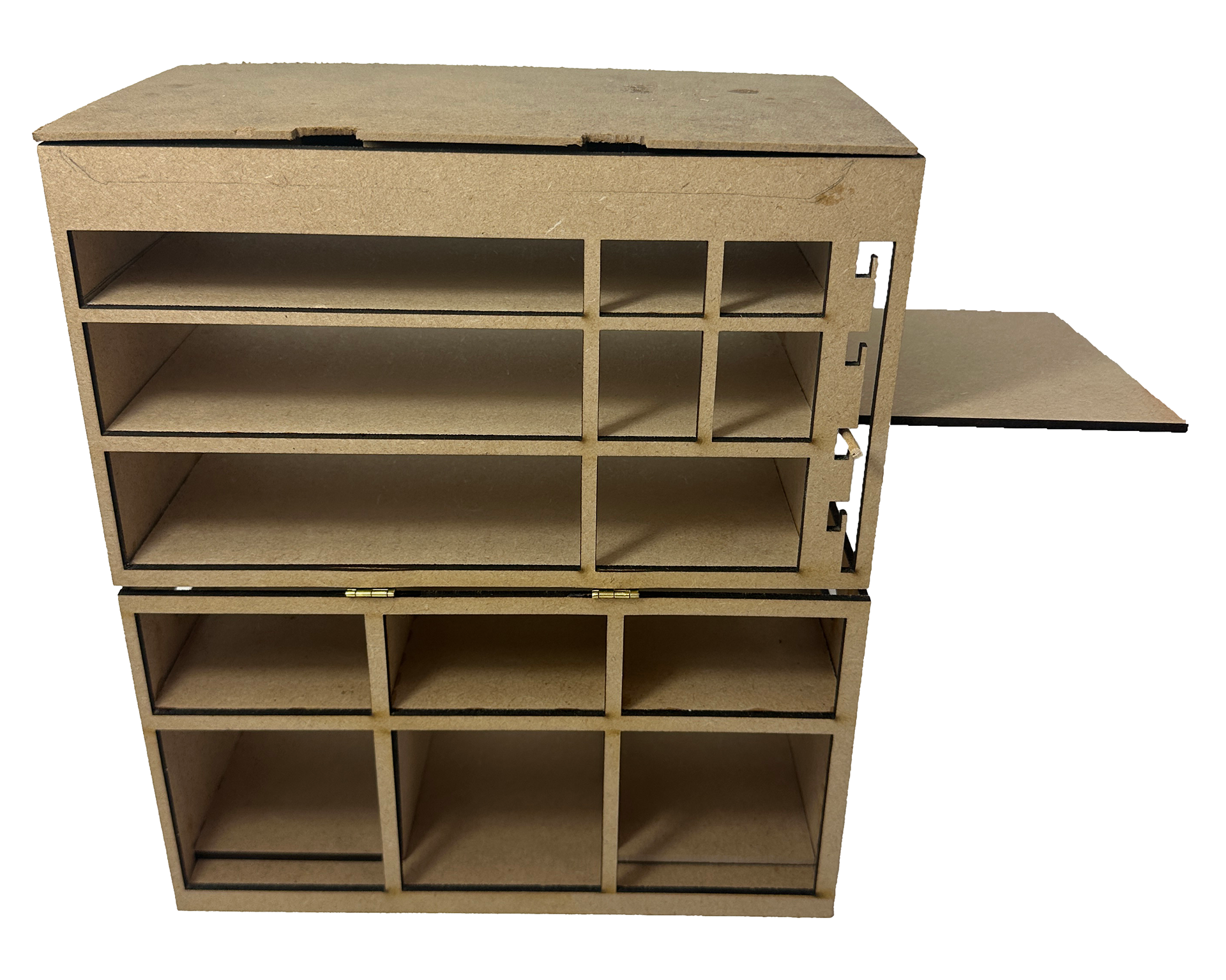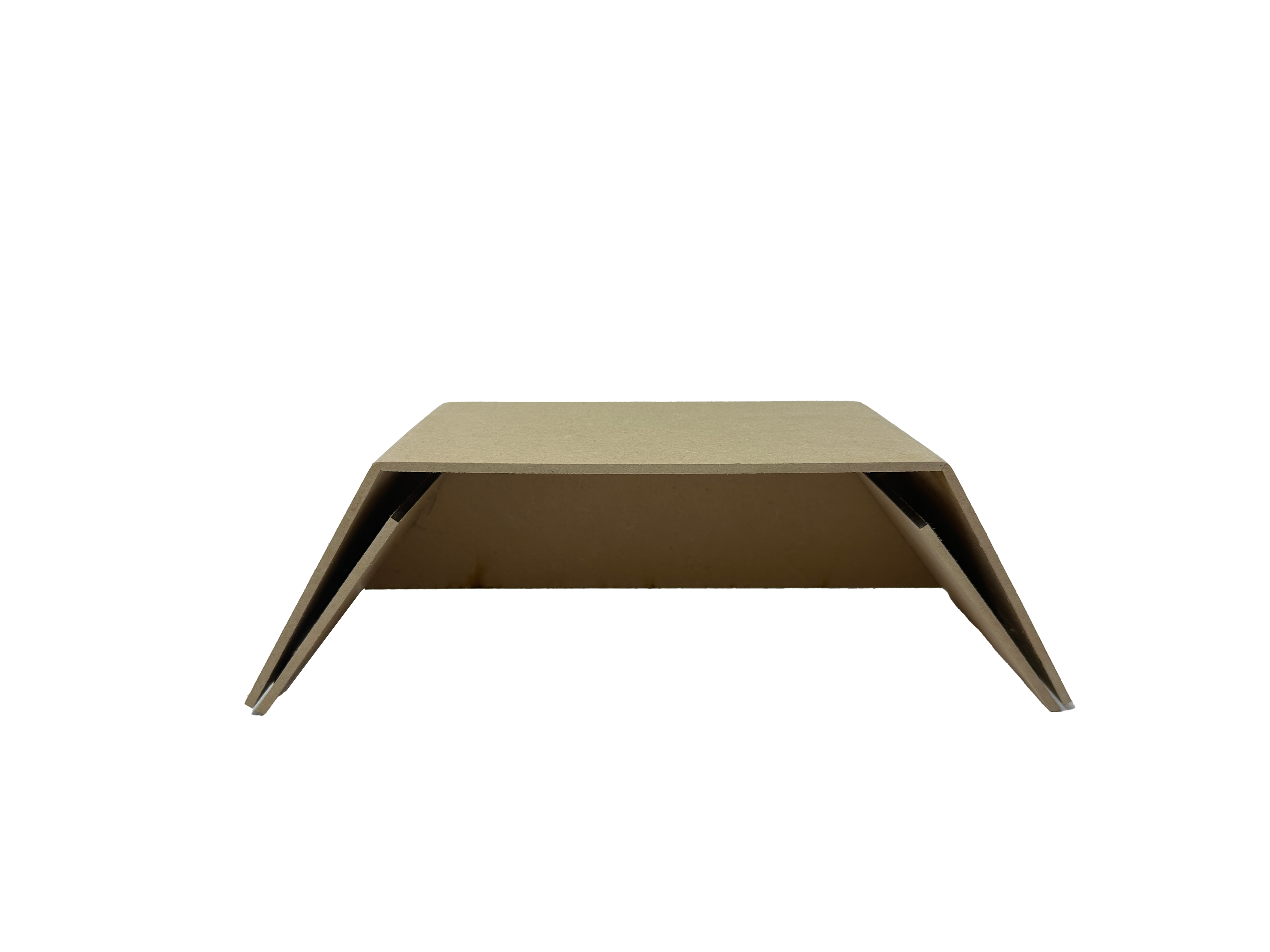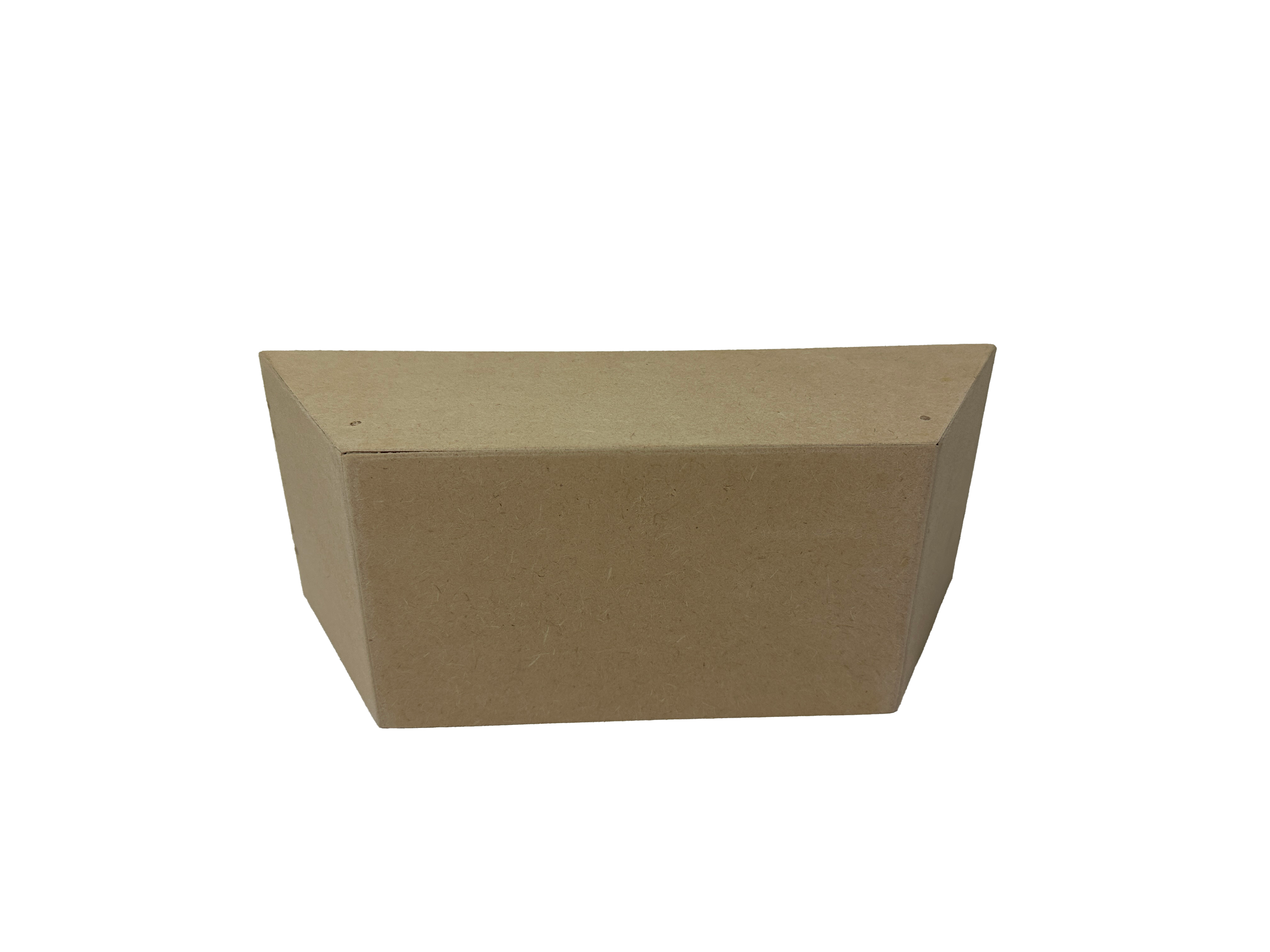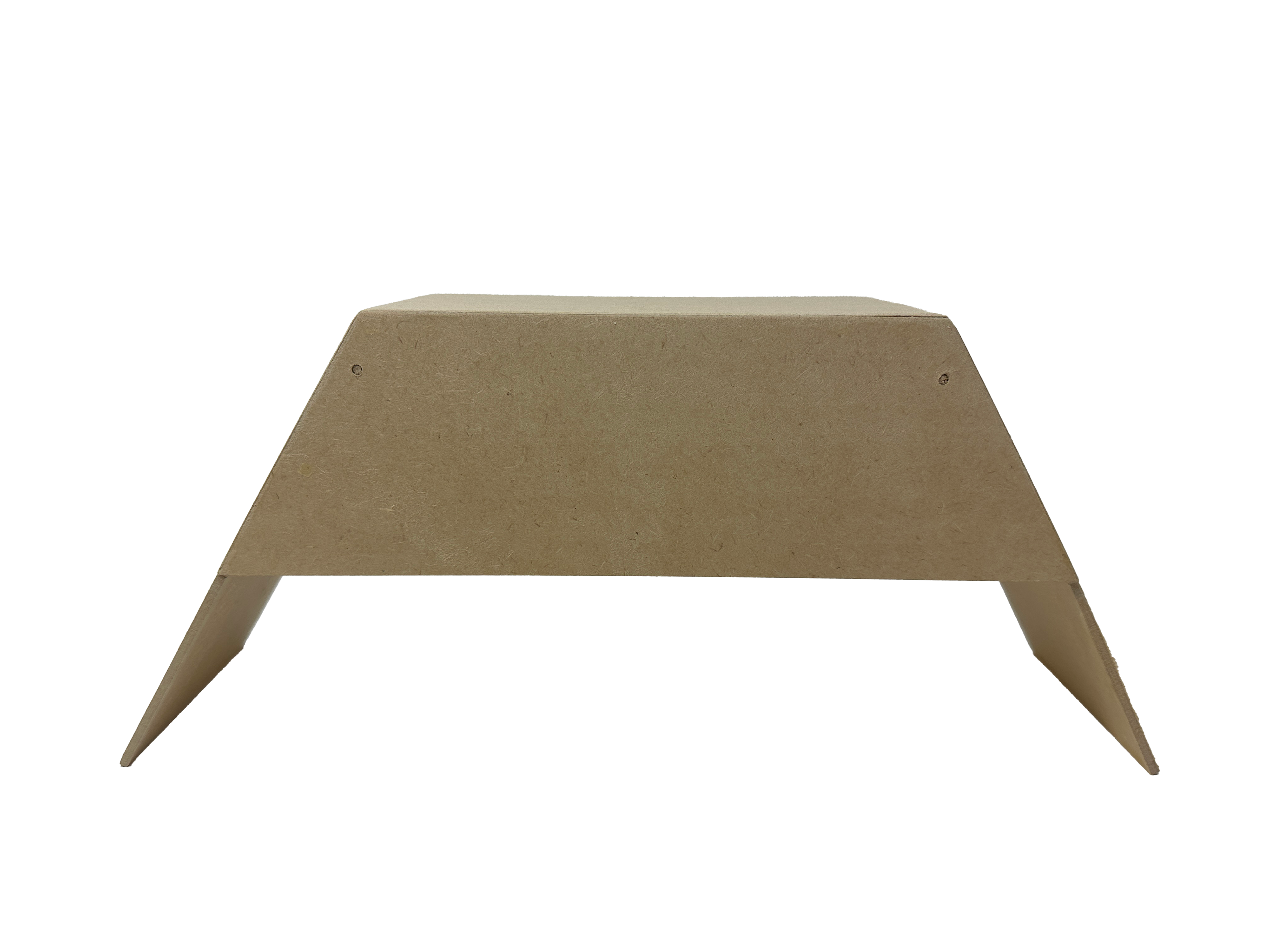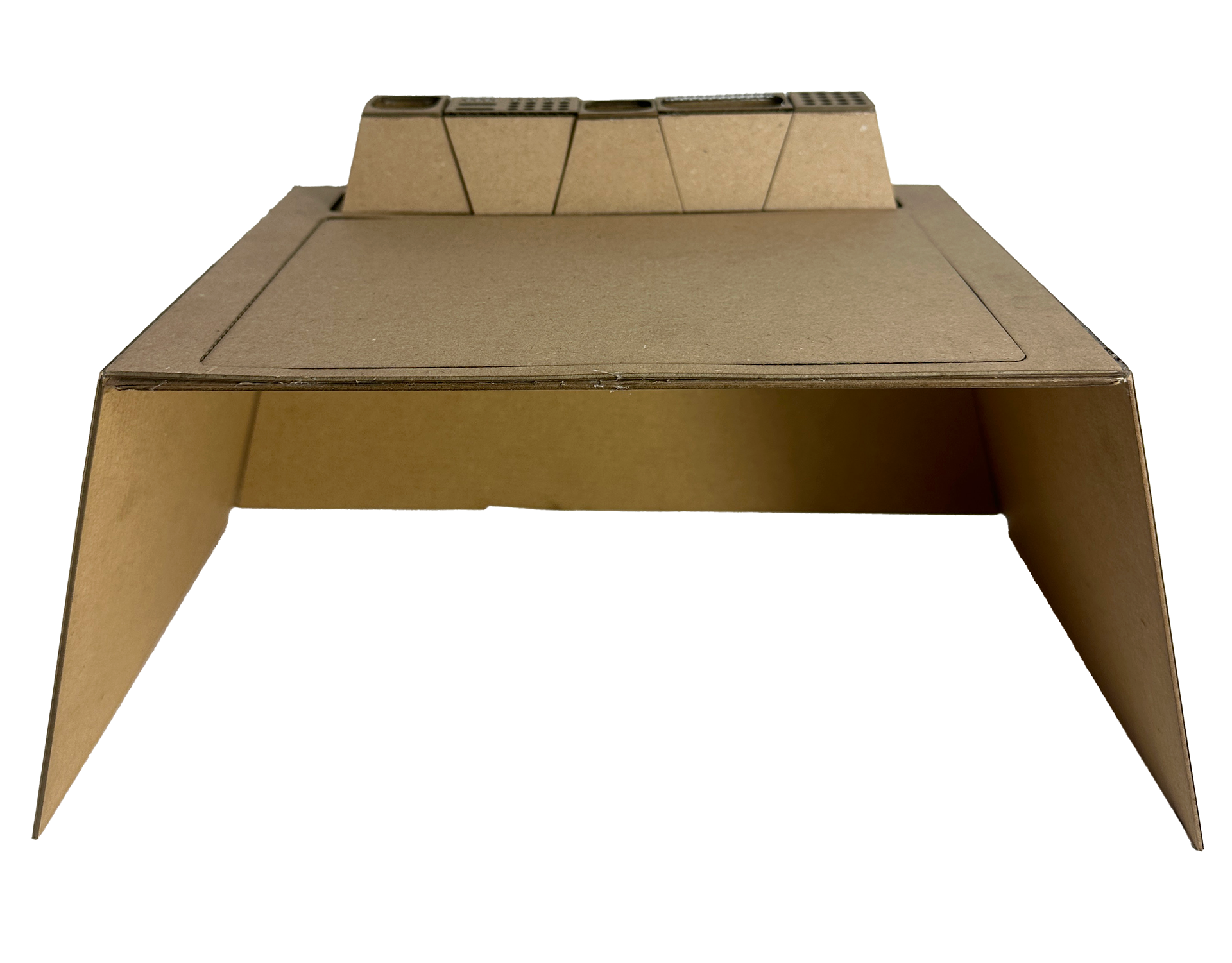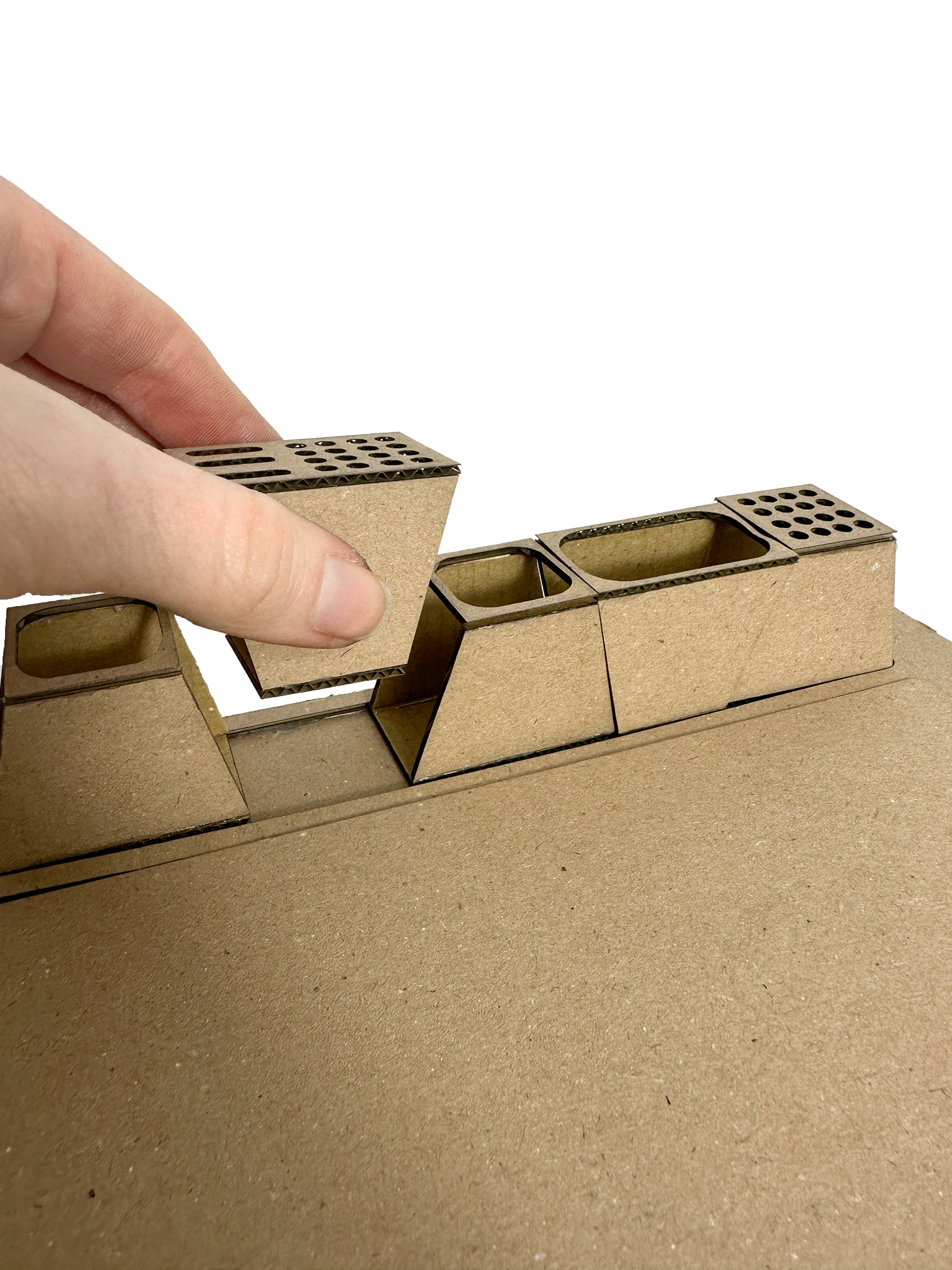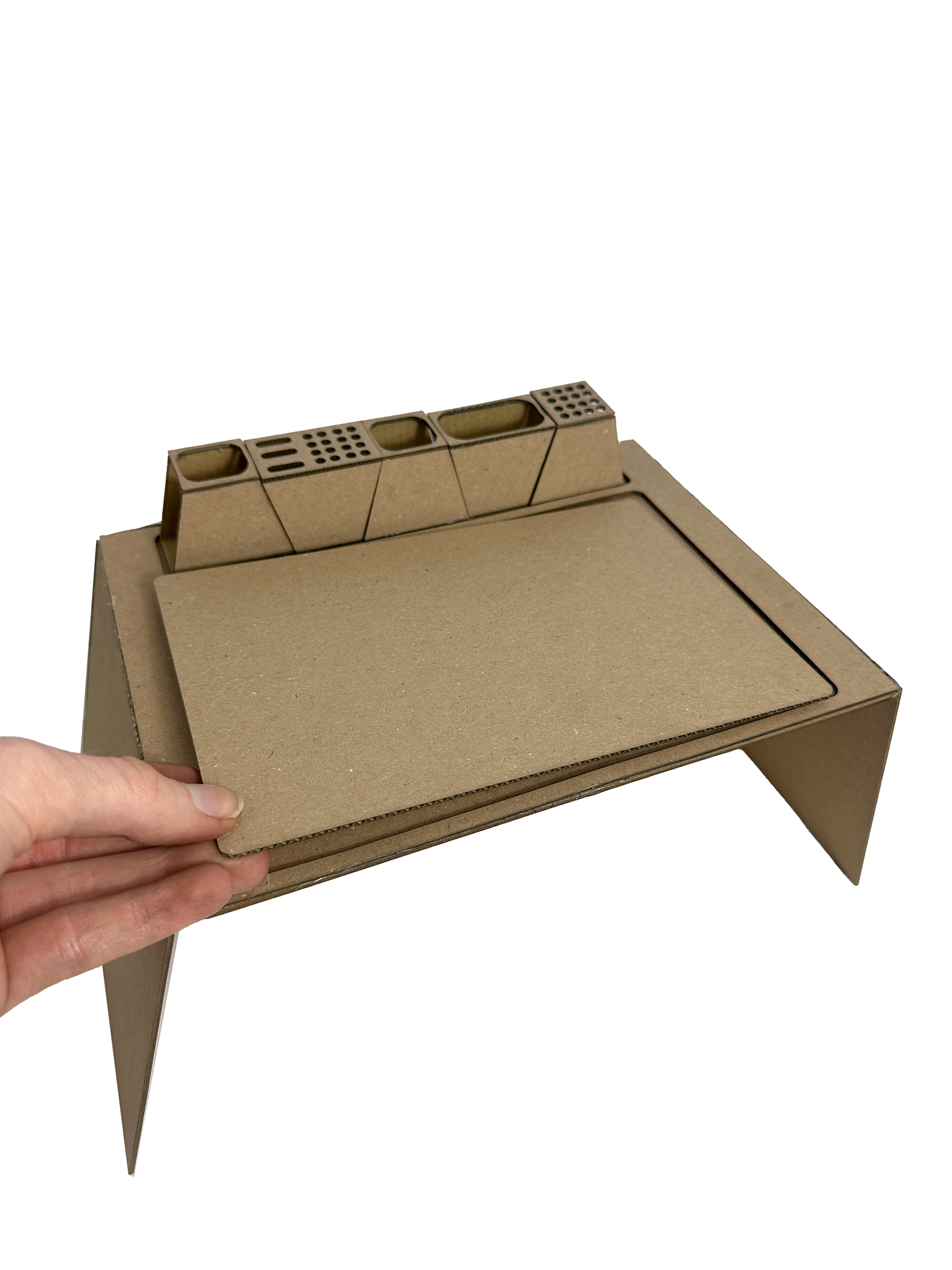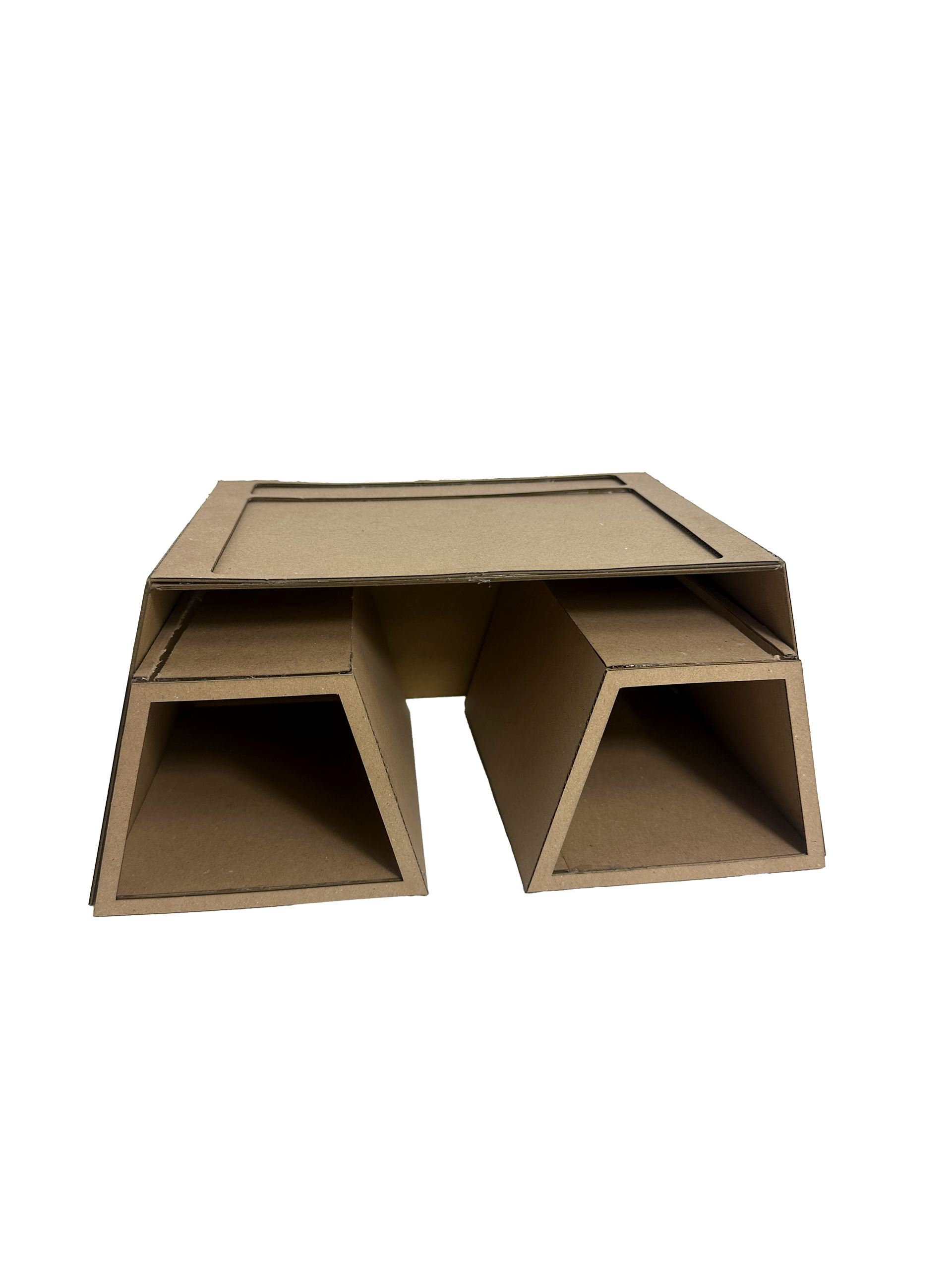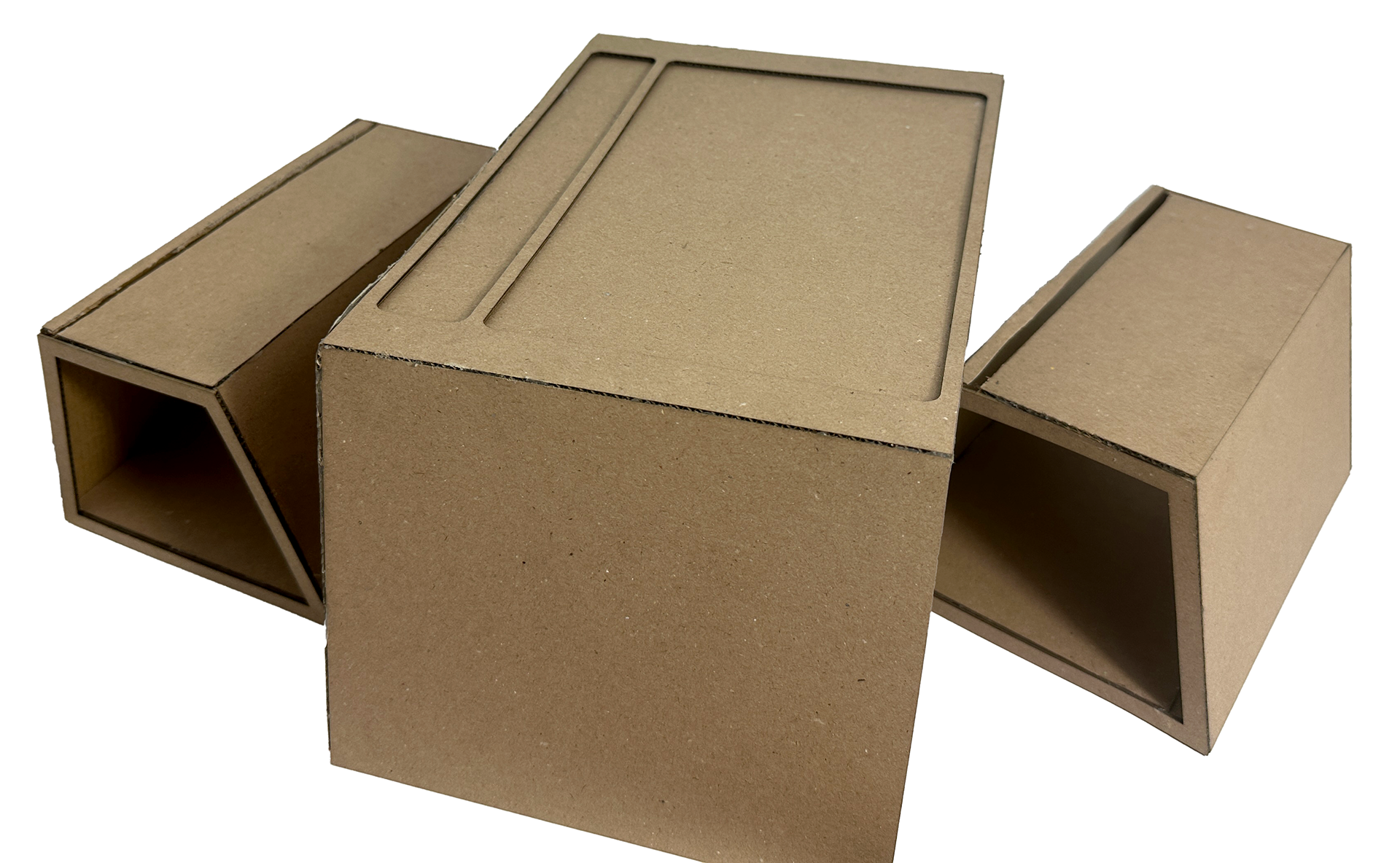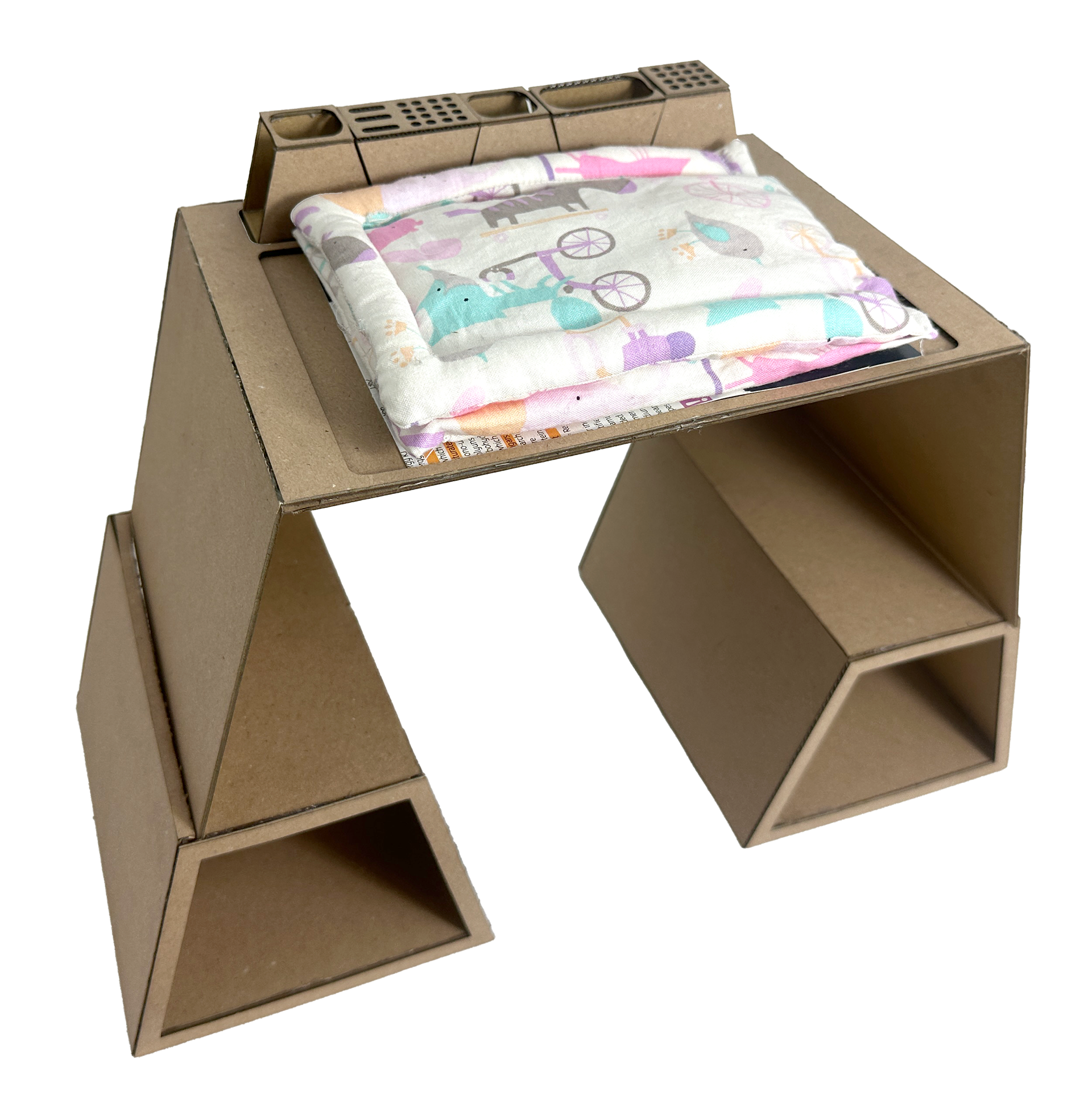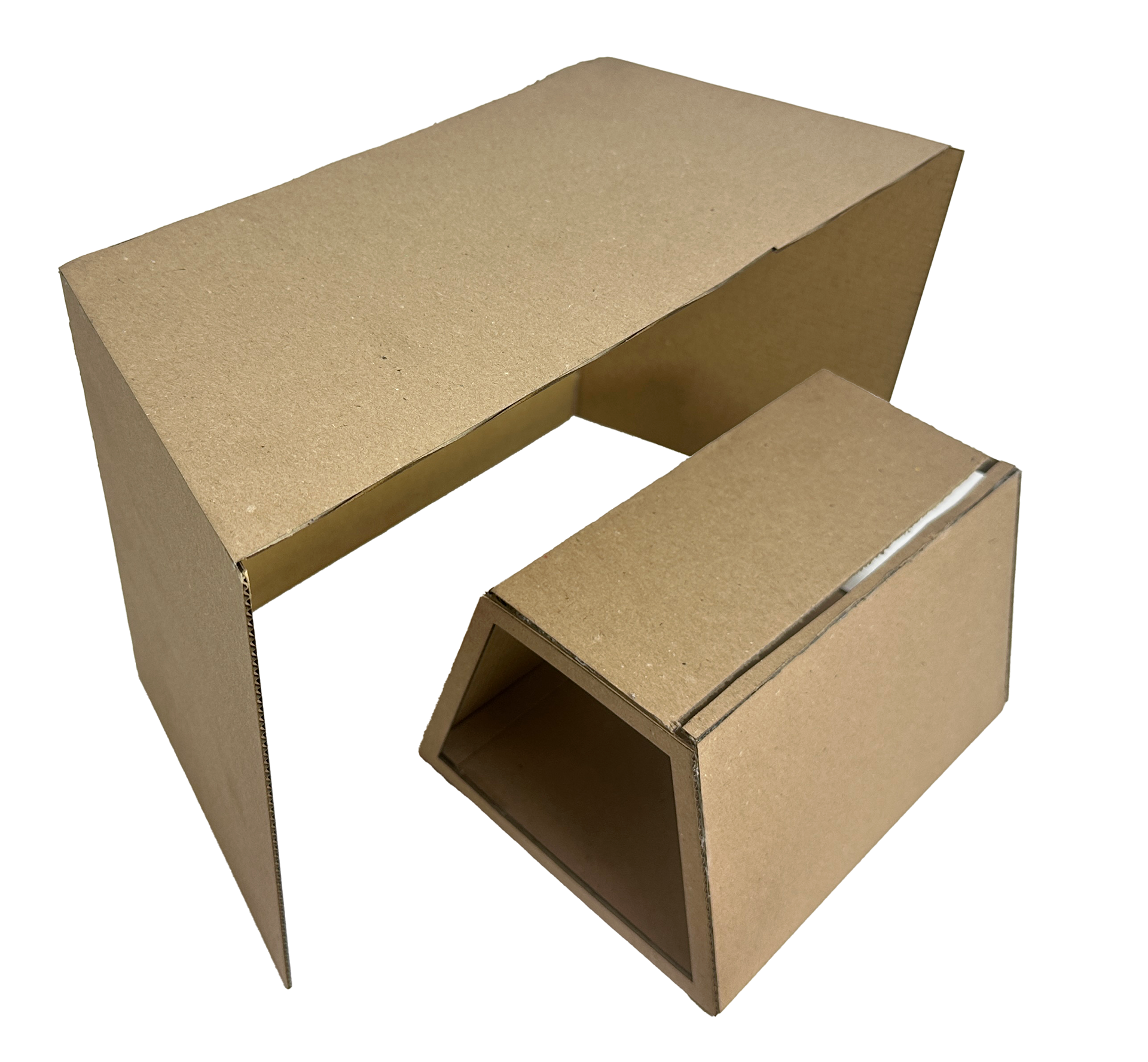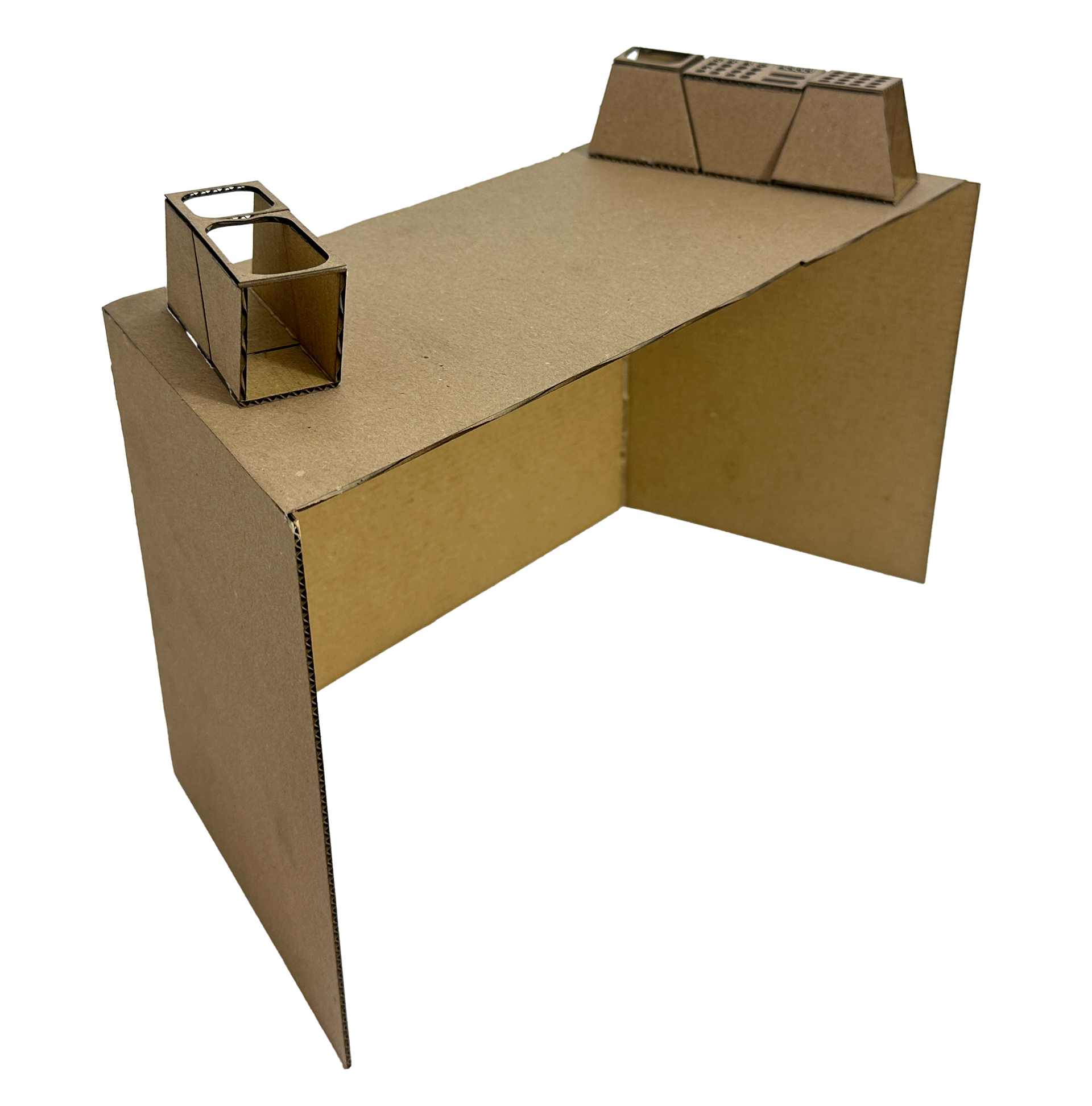Product Video
Meaning Desk-Table, inspired by Japanese designer Tomoko Azumi’s Table=Chest, Taku-Teburu is a three way multi-generational play, make and work-station, the final outcome of the Growing Furniture project.
Initially taking the form of a standing or low level baby changing space, the table can easily be adapted to an array of different creative purposes as children age. With additional surface options and alternative heights, the design can be adjusted to suit children’s needs as they discover new interests. Kneel, sit or stand, parents can interact with their children at every level and develop strong familiar relationships through this designated space for mess and creativity!
Taku-Teburu hopes to reconnect parents and children through practical play and creativity by empowering young people to be responsible for their belongings and confident in communicating their needs through personalising their space.
Further information about the project and the concept development can be seen @abbimwhonours on Instagram.
Process
Applying the Double-Diamond framework to guide the design process allowed for an explorative approach while adhering to key research outcomes. Young families were the focal point of primary research tasks including creative toolkits, interviews and focus groups. Thematic analysis of research insights refined the criteria for the design, leading to a more successful outcome which appeals to new parents.
Outcomes:
Emotionally and physically durability to support young families throughout their children's life cycle and beyond through generations of play.
Empower young people to be independent, have ownership over their space and communicate with confidence.
Encourage children to be creative from a young age and explore different activities to discover who they are as little people.
Promote strong relationships with family through practical play to challenge the technological take-over.
Influences
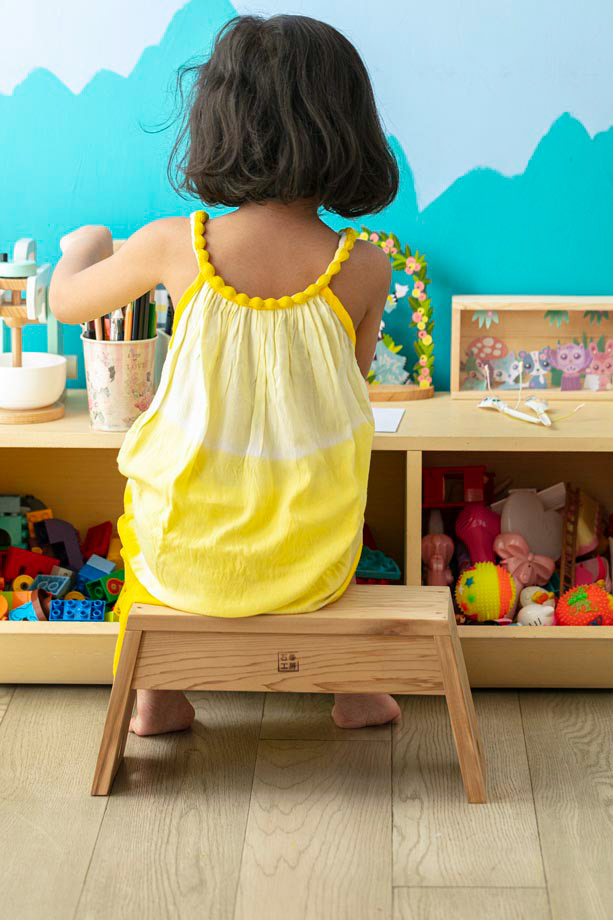
Carry= Stool . https://fameplus.com/product/details/carry-stool
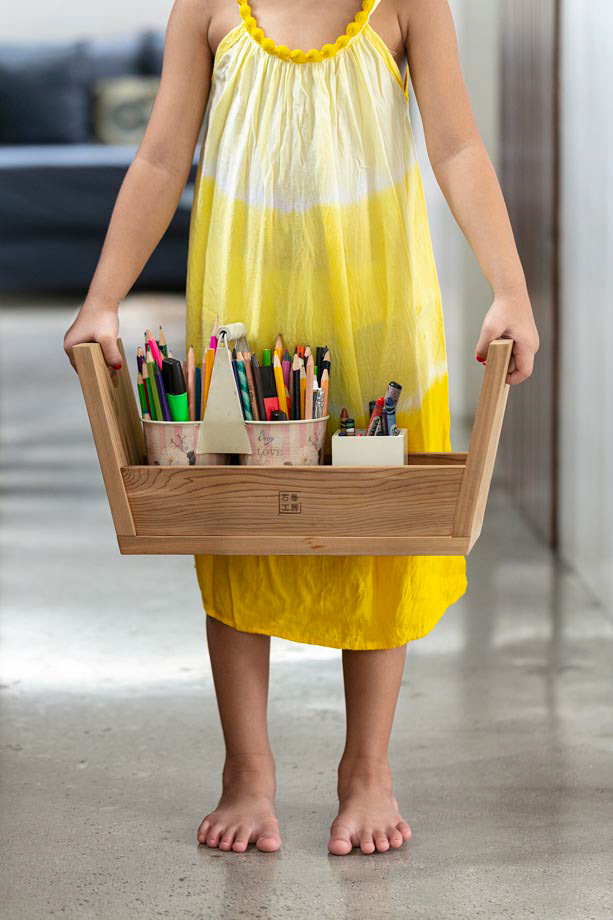
Carry= Stool . https://fameplus.com/product/details/carry-stool
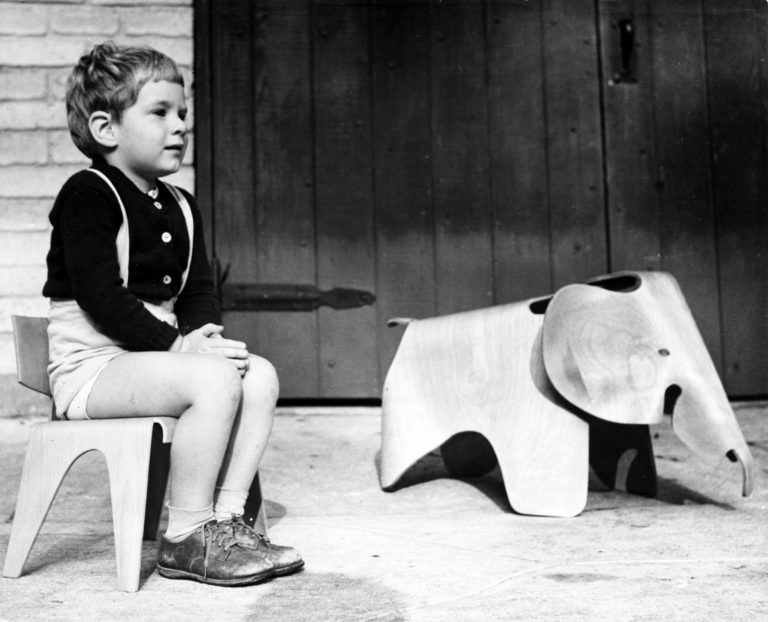
Eames Elephant
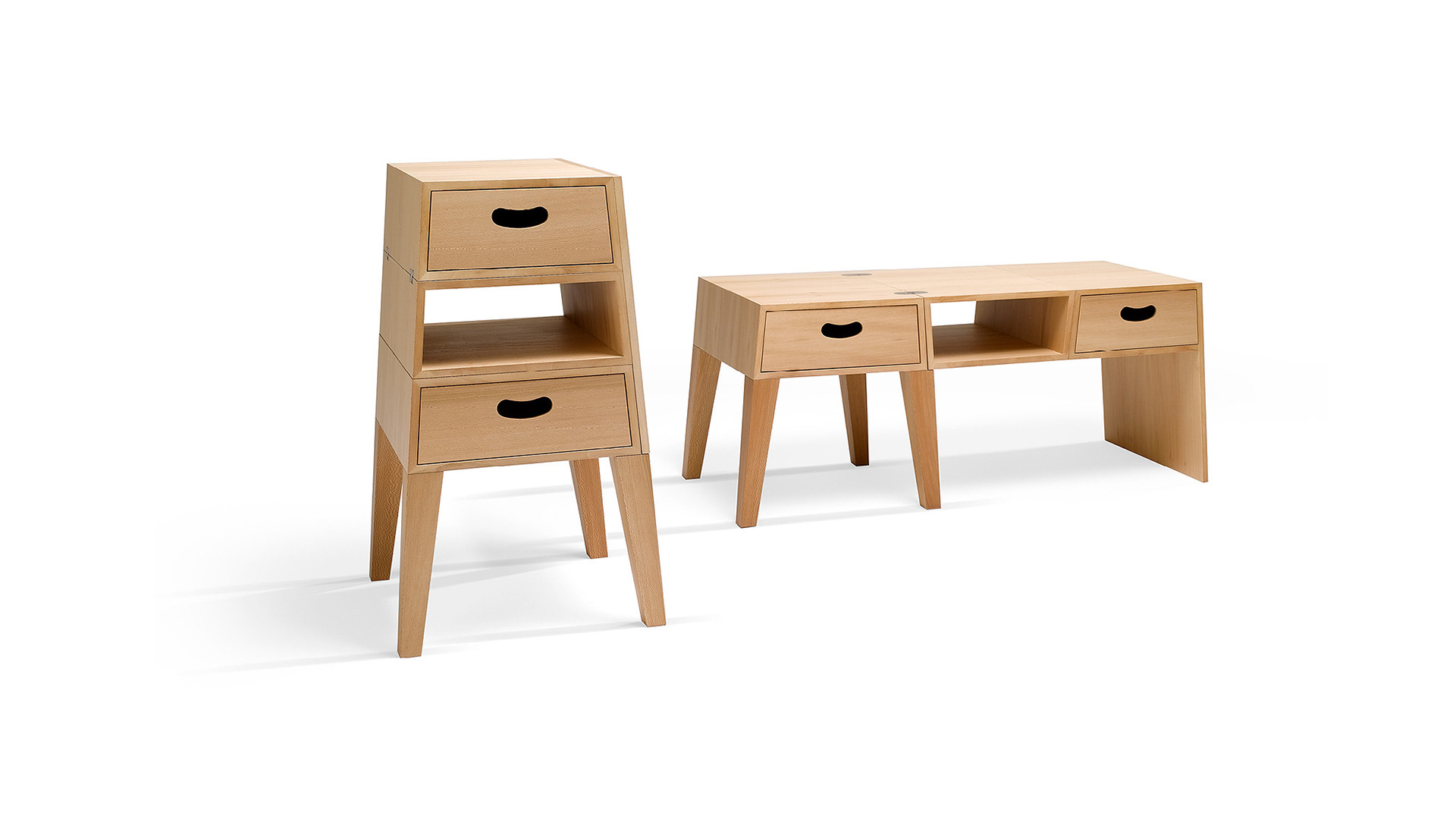
Table-Chest Tomoko Azumi https://roethlisberger.ch/en/produkte/table-chest/
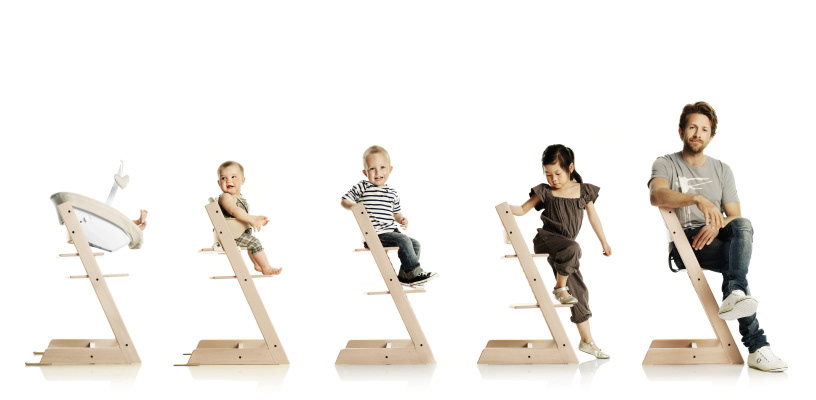
TRIPP TRAPP STOKKE (1972) Opsvik, P.https://www.opsvik.no/works
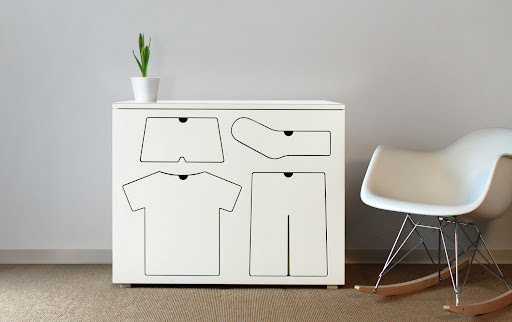
Training Dresser, 2011, Peter Bristol, Mountain View Cabinetry, www.peterbristol.net
A range of designers influenced the direction of this project. From the outset I wished to challenge modern furniture consumption and provide an affordable piece of furniture which would serve families for generations.
Tomoko Azumi’s craft of developing transformable domestic objects, e.g. Table = Chest(above, top right) with angled legs inspired the form of my final concept. Azumi’s use of hardwood and ability to execute complex mechanisms in simple interactions, creating elegant designs, makes her the lead inspiration behind this project.
Peter Opsvik’s Tripp Trapp chair (above, bottom left) was the distant mark I was aiming for when designing my own piece of adaptive furniture. Devising a simple and elegant form which is easy to transform is a challenging self instructed brief. Alongside his ability to create elegant forms following inherent functionality, I was inspired by the ownership Opsvik offered people in terms of ways to sit and styles and finishes, creating a personalised sitting experience for individuals within families. I hoped to emulate similar experiences through my own concept.
Peter Bristol's Training Dresser encouraged me to consider Montessori living as a topic of research, particularly when discussing the project with young families. Many wished to adopt similar practices which would encourage independence in their children. Investigations highlighted the importance of visual indicators when communicating with young children at a young age. For example having pictures to symbolise where items belong, encourages children to put toys back.
Primary Research
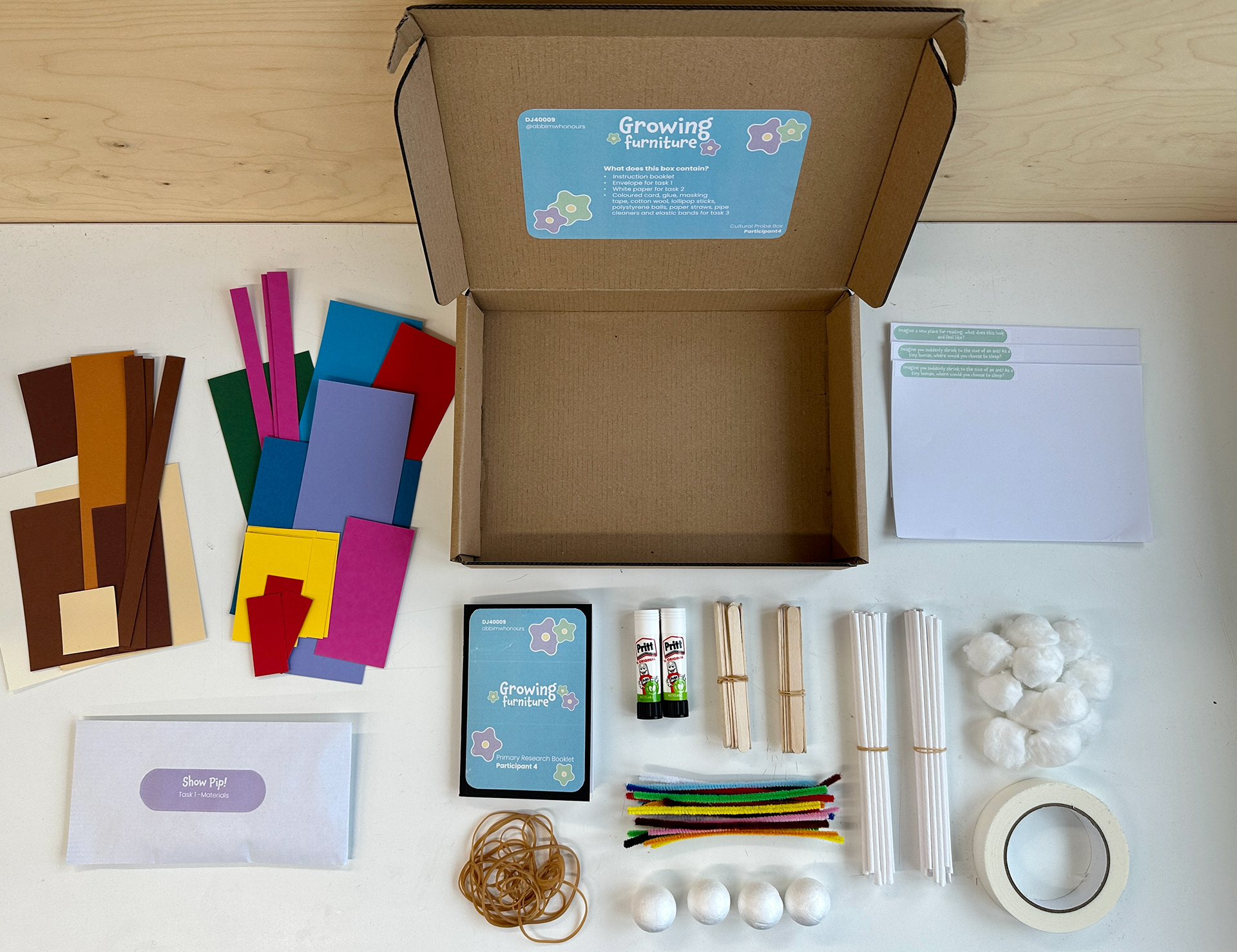
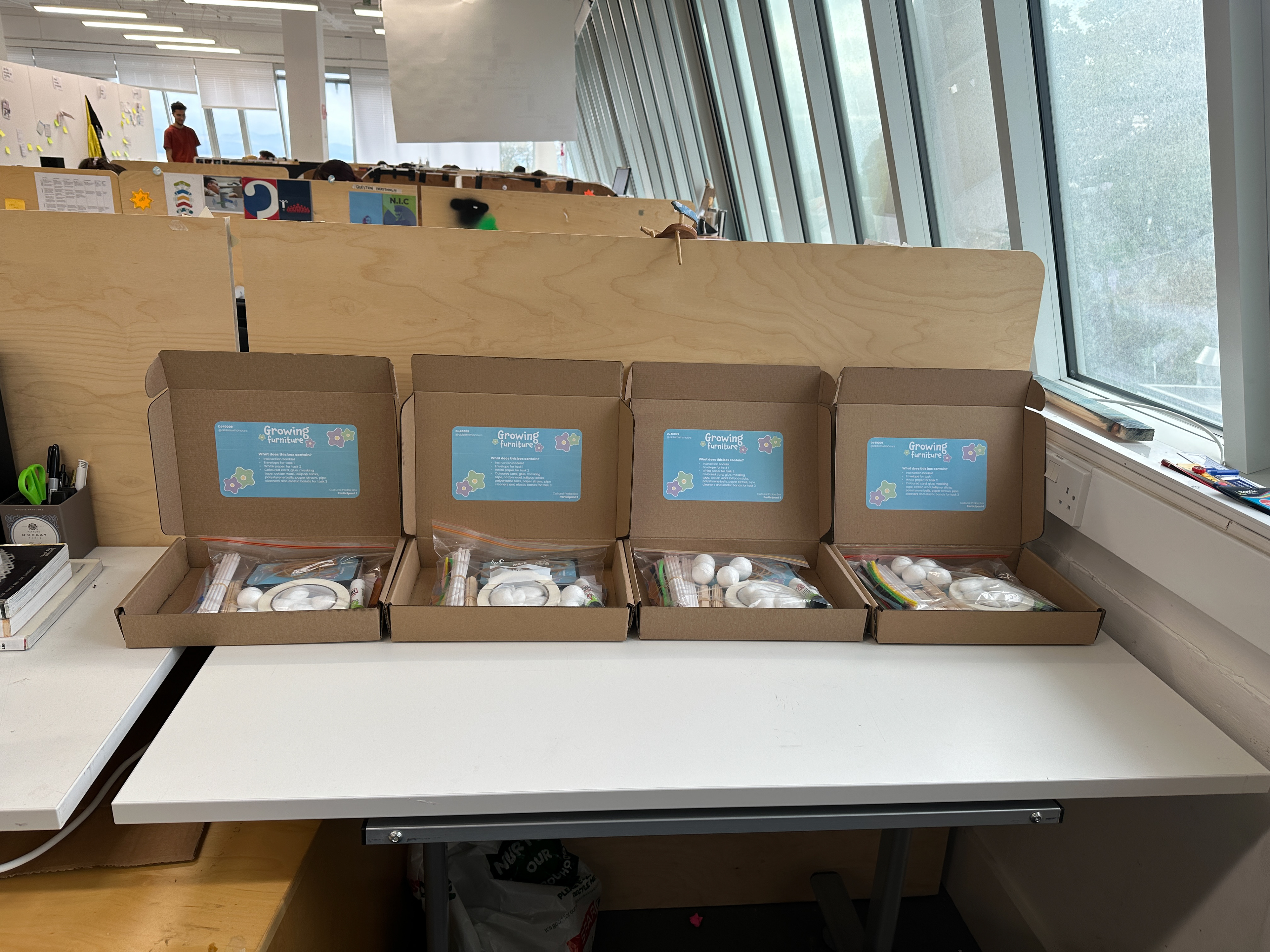
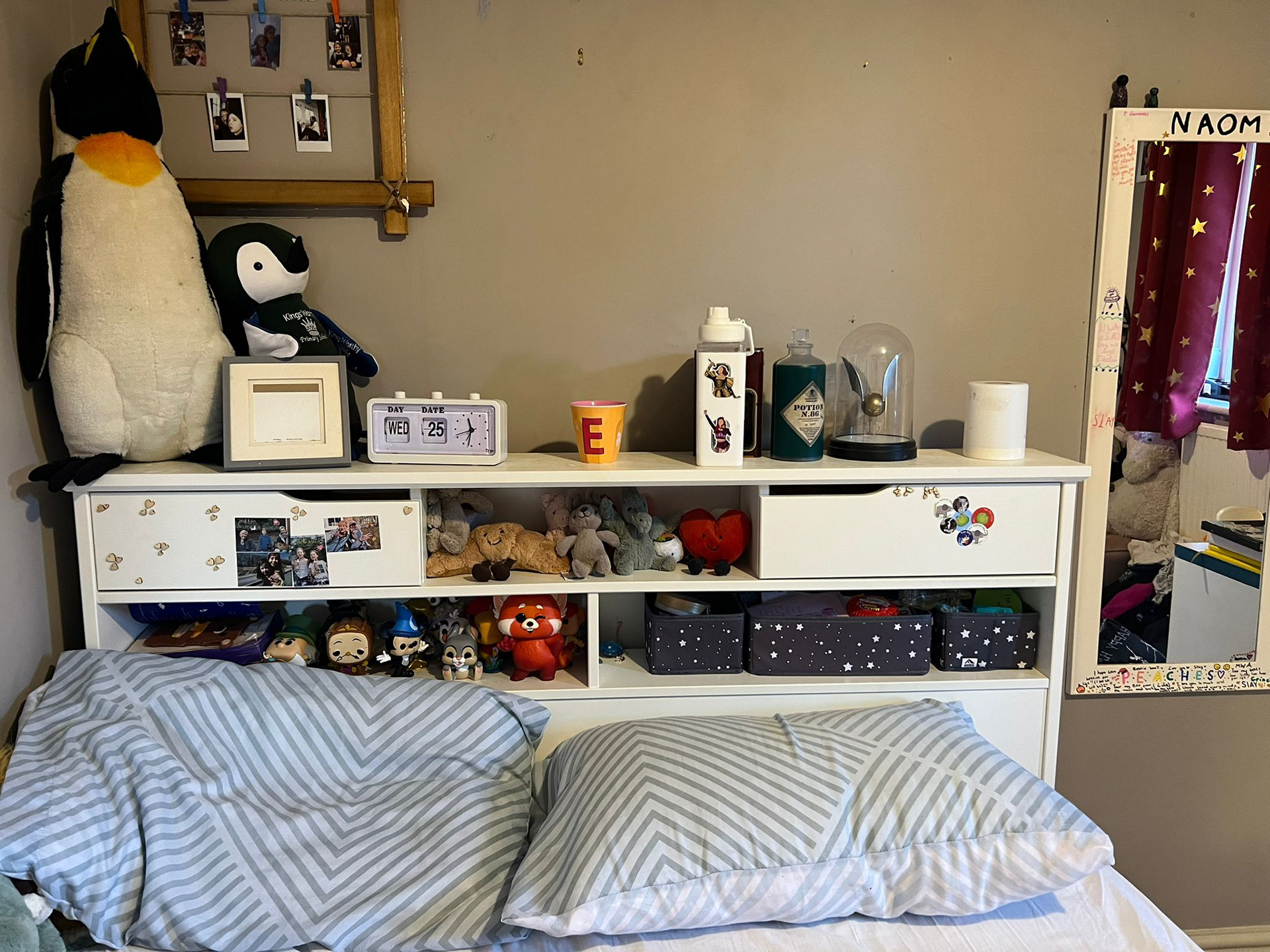
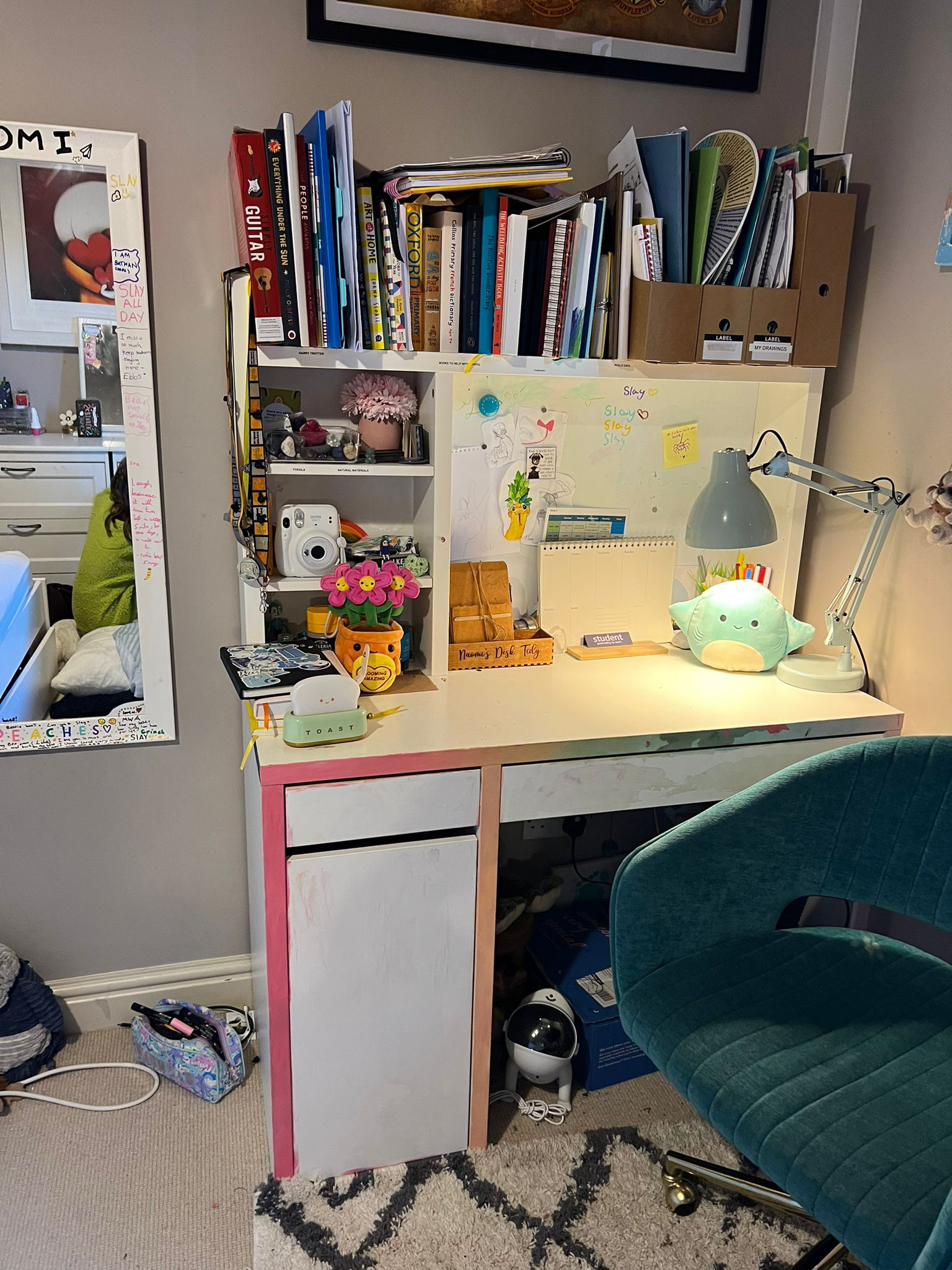
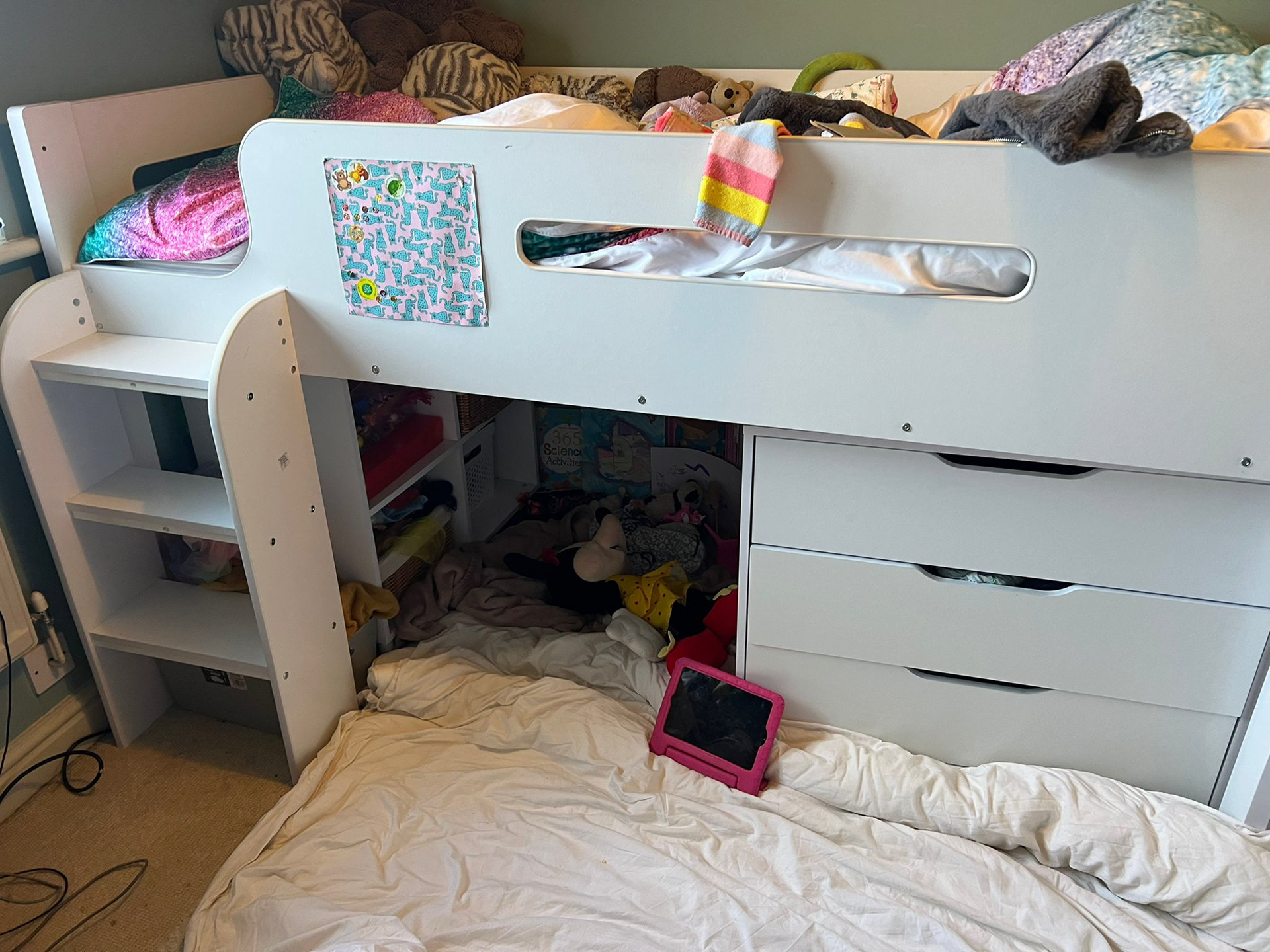
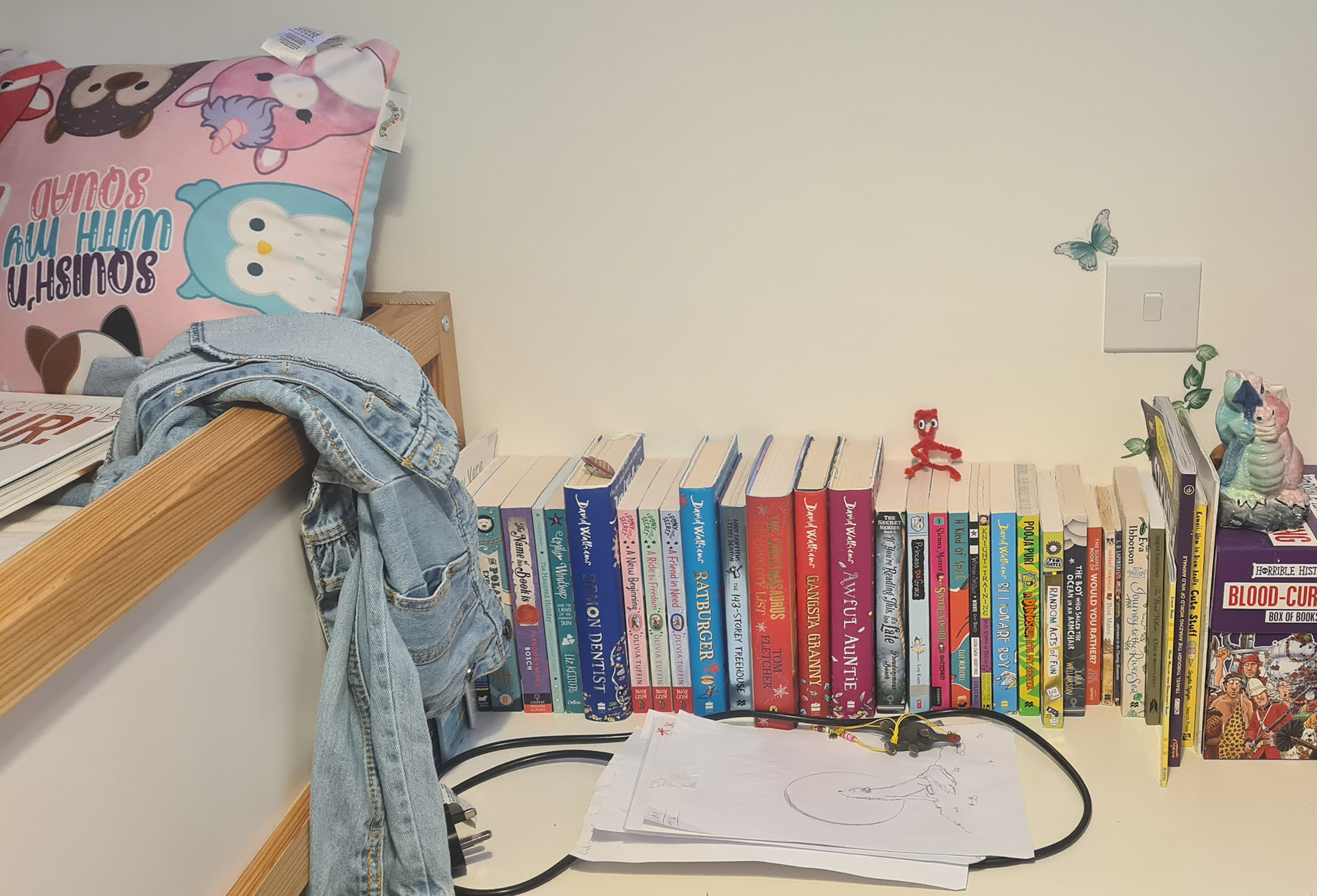
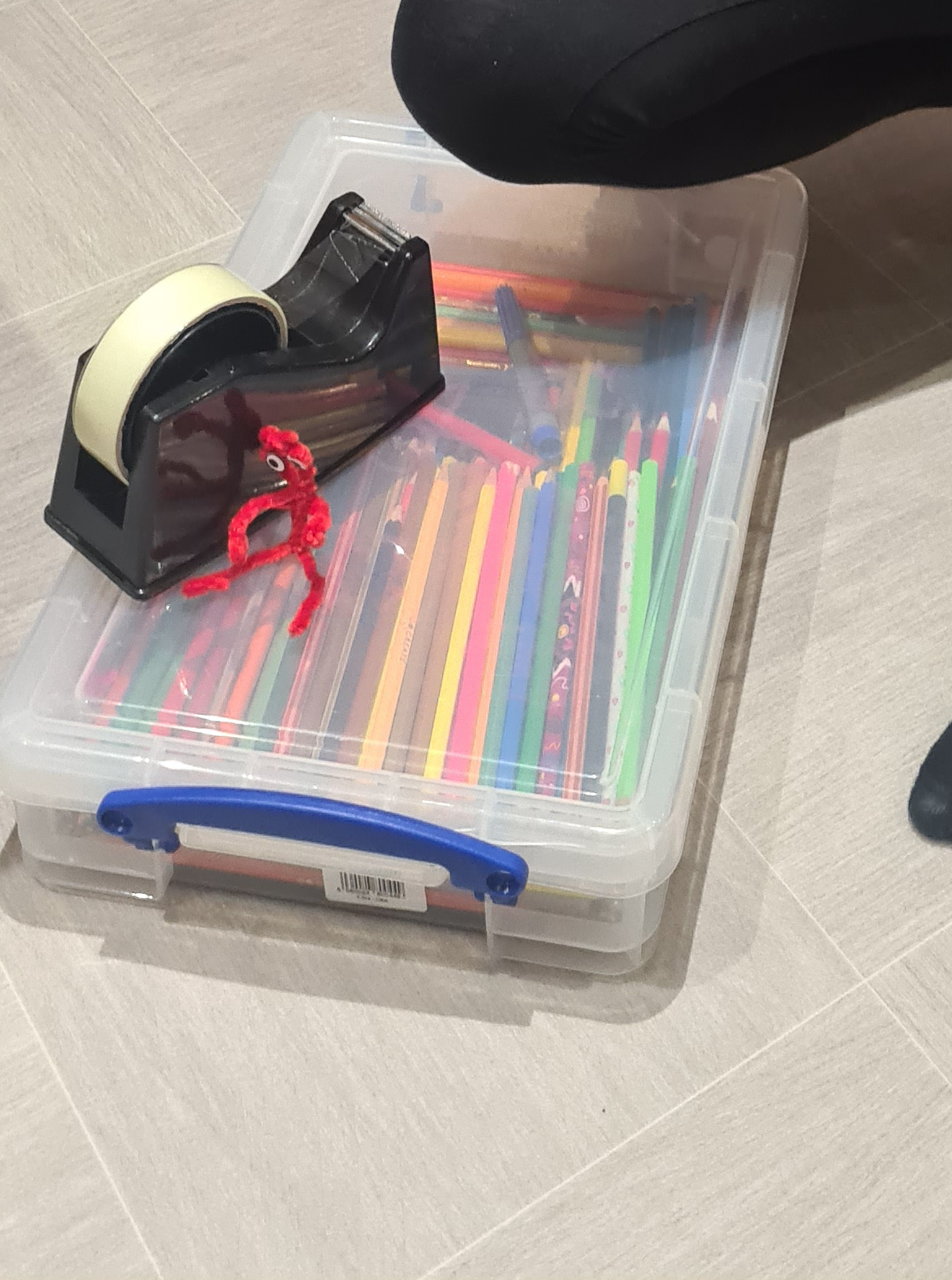
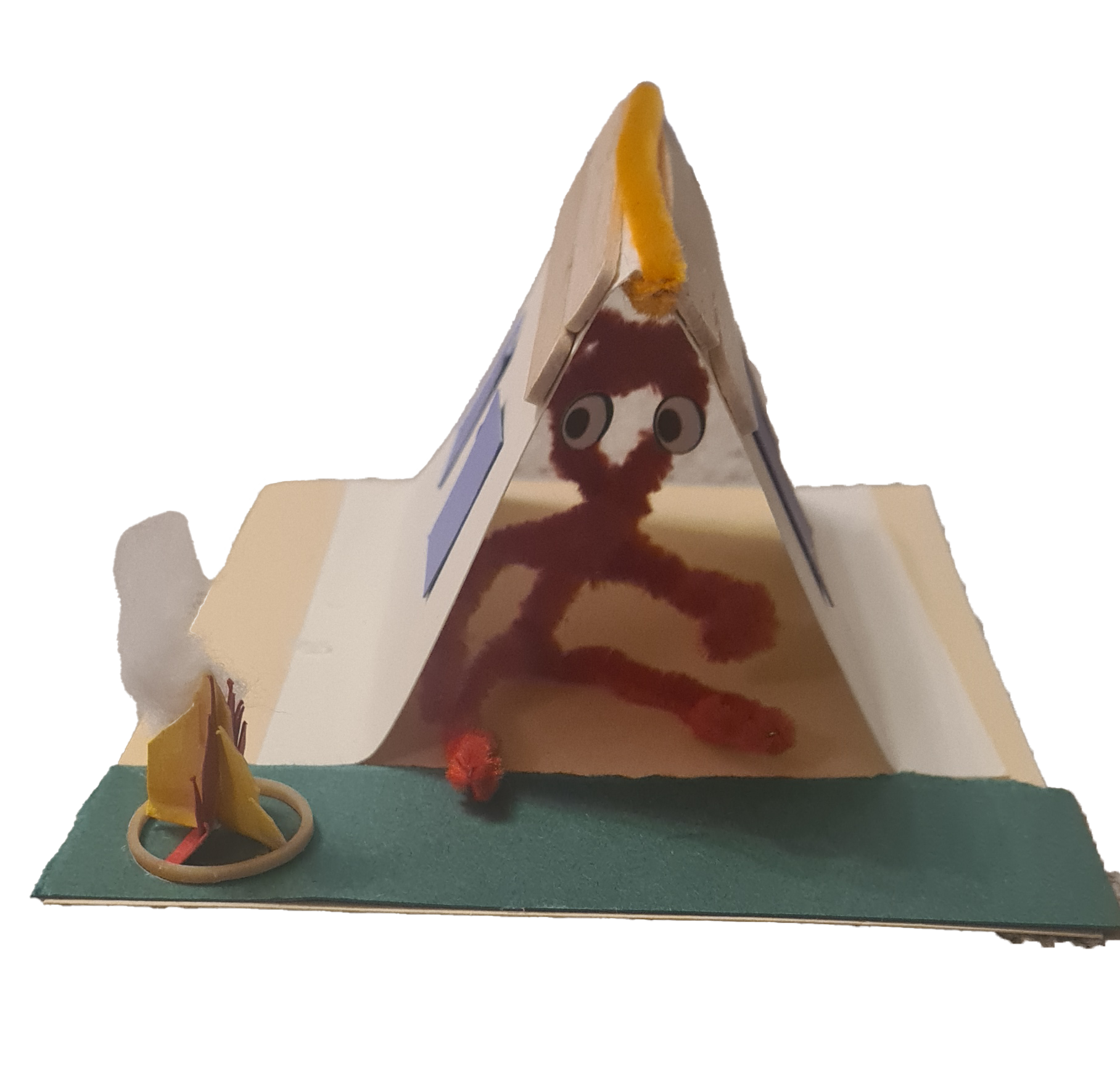
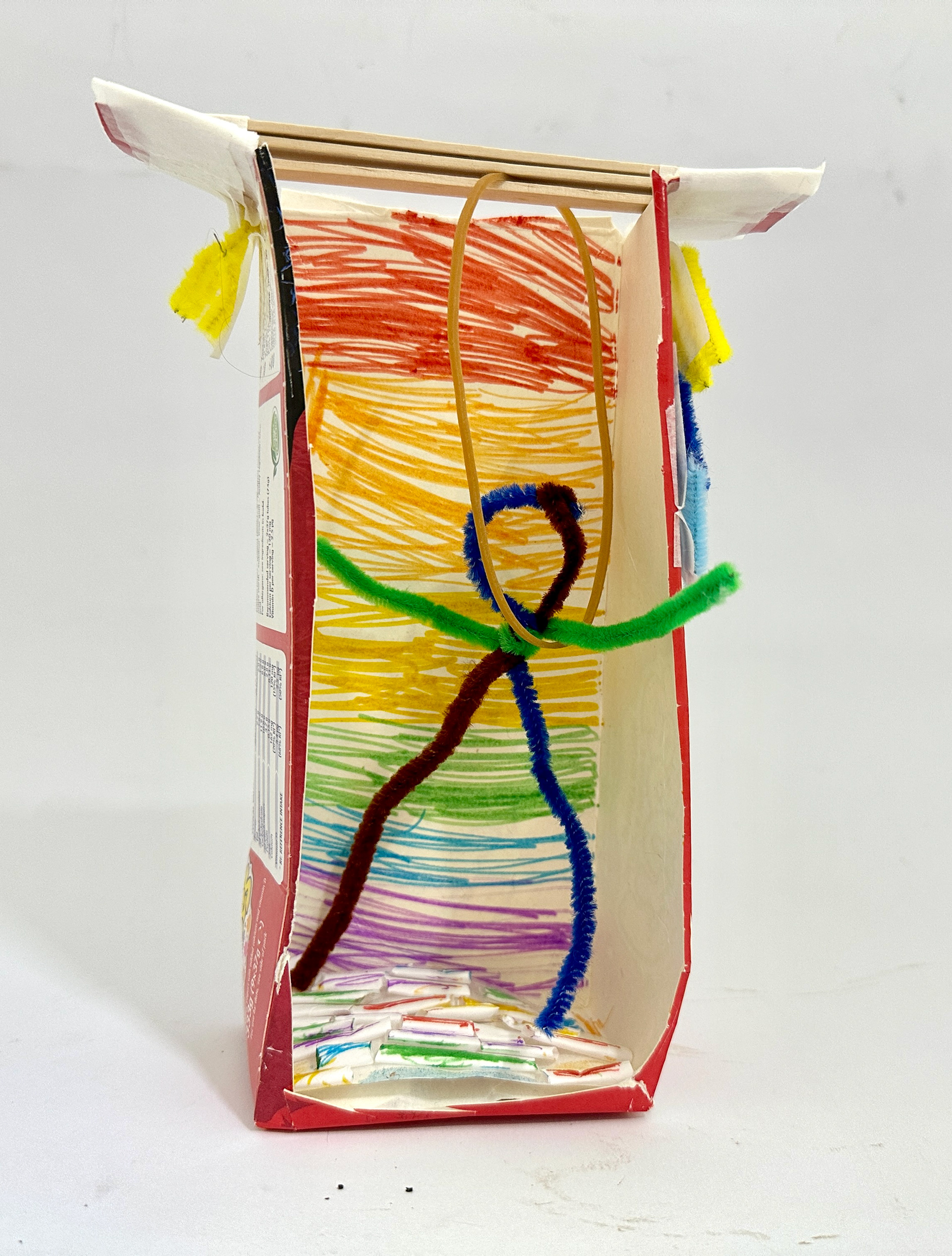
Creative Toolkits were sent to young families with a series of creative tasks. This developed an understanding of what children and parents value about their own space.
Instructions directed parents to complete the tasks alongside their children. The first indicator of the disconnect between children and parents was that a few children completed the tasks themselves (therefore parents responses were more challenging to compare and they missed the opportunity to bond with children during the creativity activities.) Interviewing parents provided further information and suggested that many parents felt time-poor and over whelmed, finding it challenging to make time for the tasks. Therefore it was important that the design outcome improved efficiencies and was easy for parents to operate.
Each child made a pipe-cleaner figure and gave him a tour of where they keep their favourite things, where they like to eat and where they feel most creative. They were also tasked with drawing their ideal piece of furniture for their room and to design their own den for 'Pip' the pipe cleaner.
Their responses highlighted they prefer low level storage allowing them to access belongings independently and some don't have their own space for creative tasks and instead use their floor or the dining/kitchen table. This suggests a need for affordable creative spaces for children which encourage a range of creative activities and can be personalised to each individual child's needs.
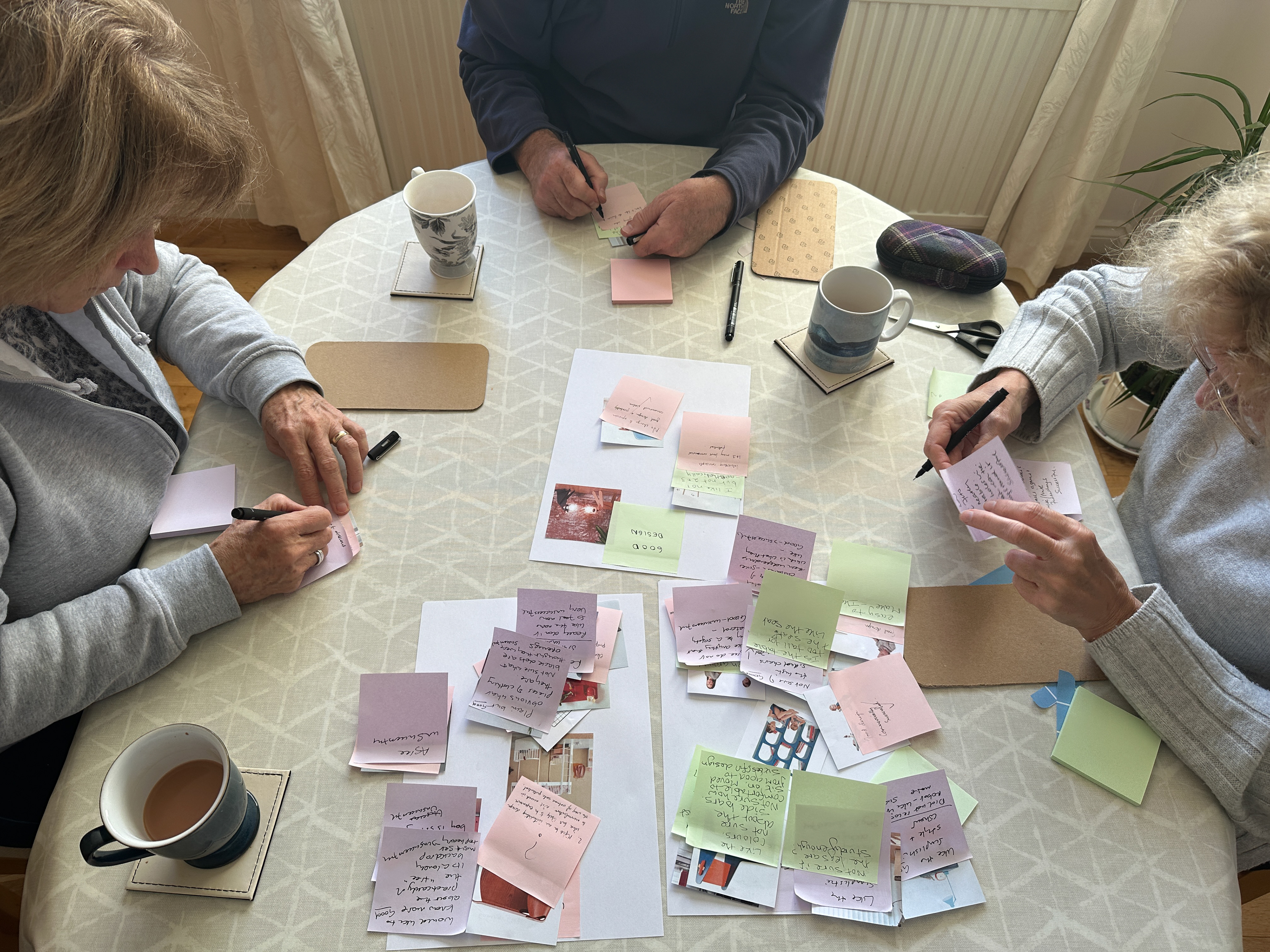
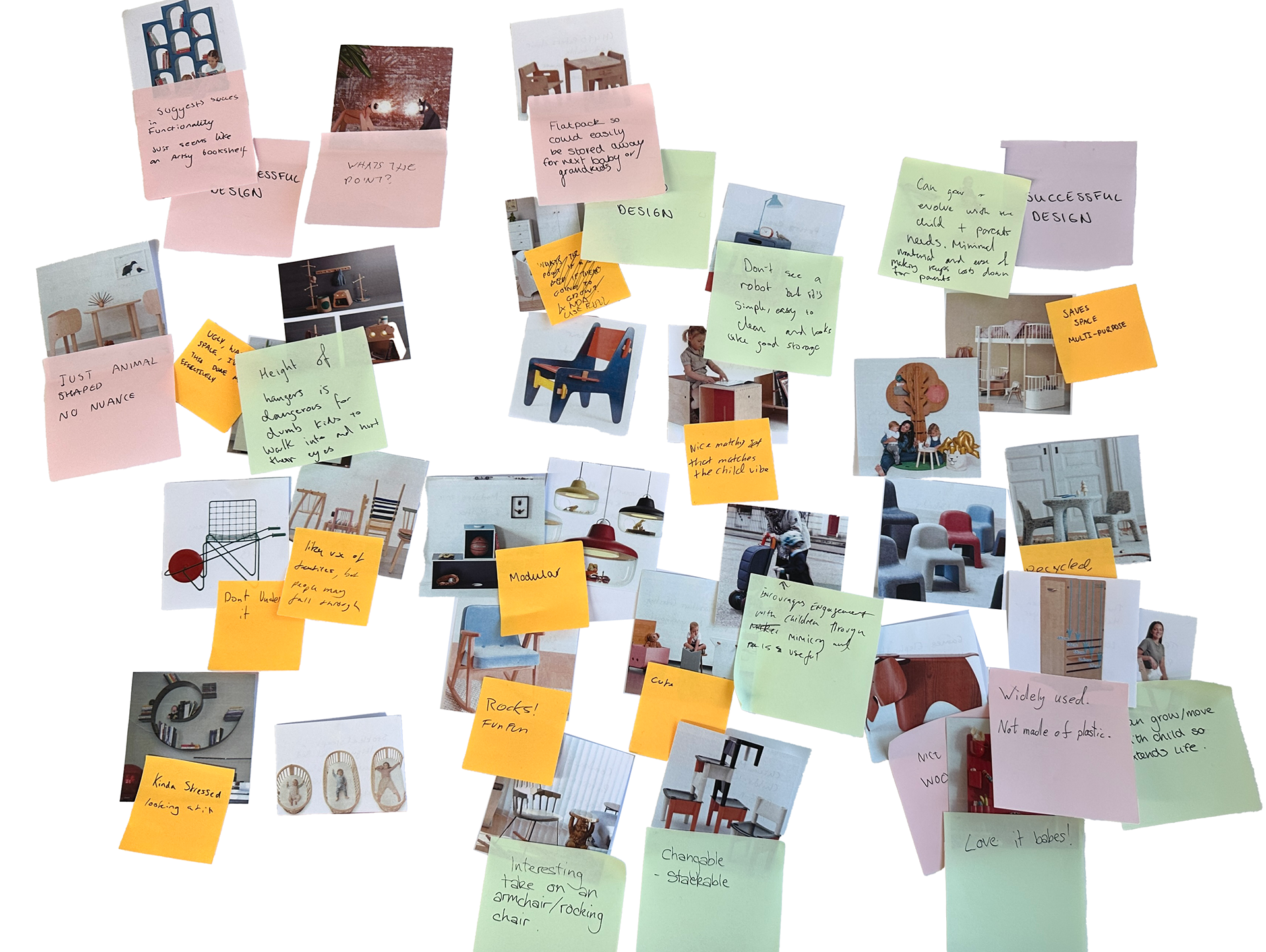
A similar workshop was run with both designers and parents using the children’s furniture inspiration images. Considerations such as safety, functionality and materials were very important for parents, while designers were more focussed on aesthetic properties and tended to value playful design ideas as more successful in children’s furniture design.
This subsection of primary research was thematically analysed before being combined with the insights from the wider research. Trust, simple style, ease of assembly and ease of cleaning were some of the key considerations which emerged from this task.
Idea Generation
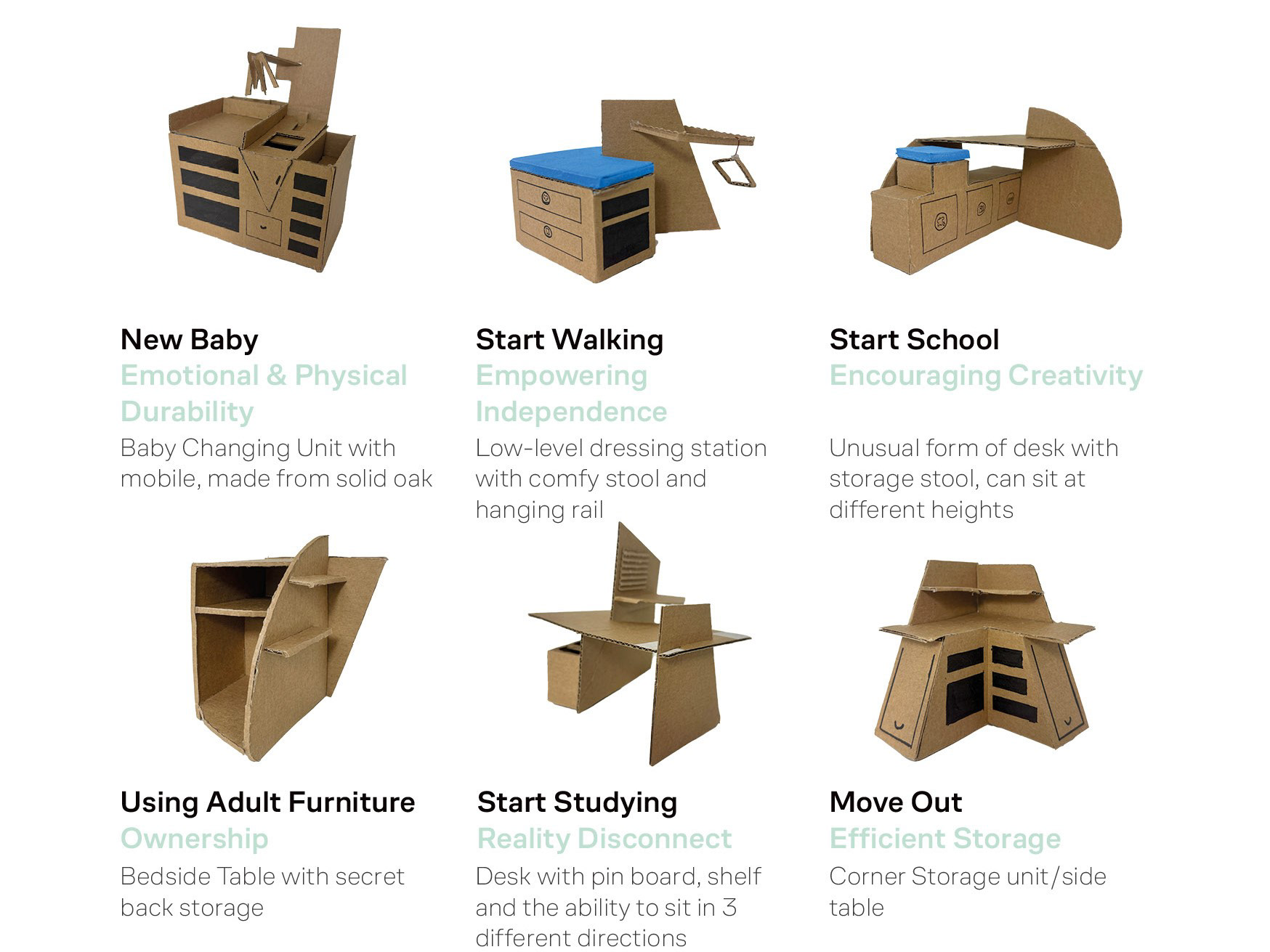
Discussing children's furniture with families and investigating which items they purchase more often it became clear that the majority of parents struggle to find efficient storage and often discard unwanted or broken storage furniture. Combined with the 71% of parents surveyed who strongly agree that furniture which grows alongside their child would be useful, indicates that a growing storage system could be beneficial for young families.
Designing for all stages of life was overwhelming and so this was broken down into key points of development, providing a framework for ideas.
3 Key Concepts
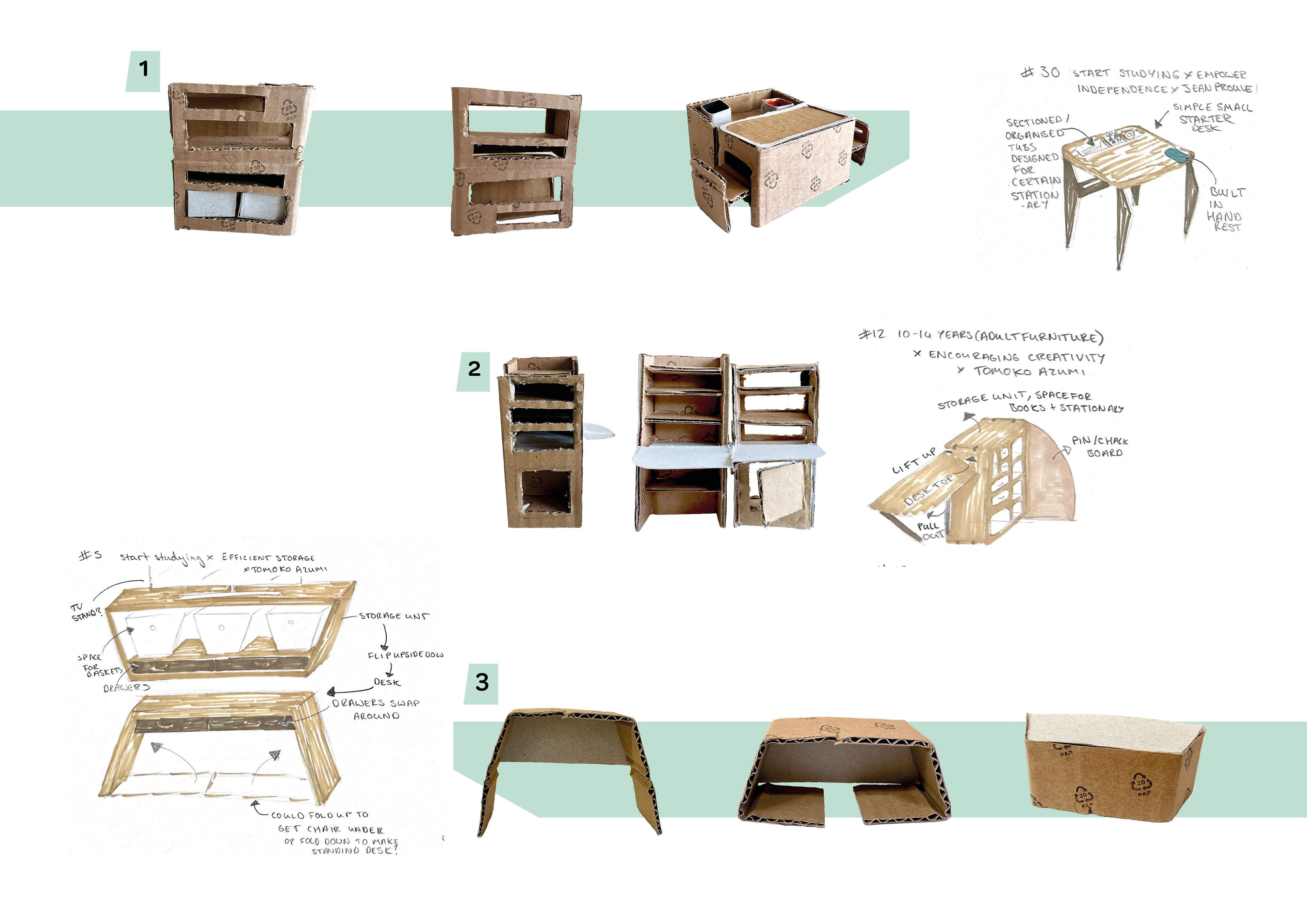
1 - A baby changing unit which unfolds into a children's craft station before being flipped upside down to form a dressing table/chest of drawers.
2 - Tall unit with fold out bedside table, unfolds to show more storage and raise a desk.
3 - A desk, console unit and coffee table in one.
Prototyping
